EXPLORER THE
How Travel Shapes Us

LEAVING ONLY FOOTPRINTS IN ZAMBIA VIETNAM THROUGH A DIFFERENT LENS
EXPLORING THE STARS
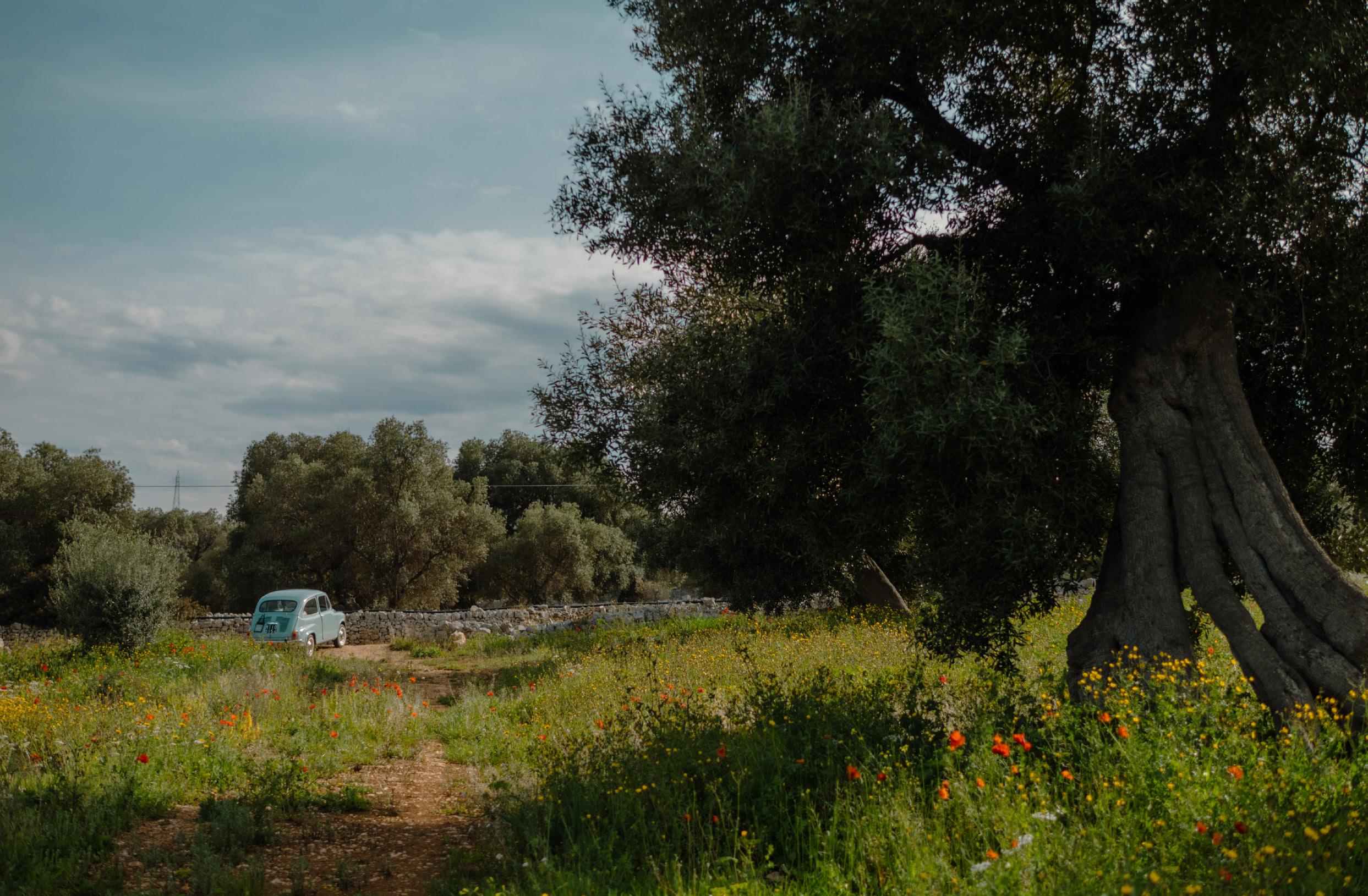
CONTRIBUTORS
MELISSA HAUN
Writer and editor
North Carolina native Melissa has a passion for storytelling and travel. She’s lived all over the world and is currently based in Lisbon. When she’s not writing, you’ll find her chasing the perfect wave along the sunkissed shores of Portugal. Melissa explores the profound ways in which the surfing community is shaping the destiny of two Portuguese fishing towns on page 40.
Next destination? Croatia
BEVERLEY LENNON
Writer Hailing from Mauritius, Beverley got bitten by the travel bug (and mosquitoes) while in Asia and has been searching for the best places to swim and eat ever since. Having previously called Malaysia and Indonesia home, she’s now living in a plant-stuffed apartment in the Netherlands, rambling up and down Europe in her free time.
Next destination? Nepal
Editor Jessie Brechin-Leman




Sub-editors
Melissa Haun
Beverley Lennon
Design
Extract Studio
Illustrations
Lauren Crow
Other contributors
Lily Bunker
Jody van Merode
Natalie Lyall-Grant
With thanks to Trails of Indochina
Luke Farrell
Wilderness
Nomad Tanzania
Alexandra Hom
Viaventure Guatemala
Torfhús Retreat
Greystoke Mahale
Lares Tours
Cover Image
Two fishermen in Peniche, Portugal
Dear Travellers,
There are many reasons we do what we do at Jacada. We are all motivated to bring you the best experiences the world has to offer, to open people’s eyes to the wonderful diversity and unique stories that surround us and to continually expand our horizons.
But beyond those motivations, the team shares an important common set of values and an understanding of what we want to bring to the table. It’s something we speak a lot about within the company. Our ‘core values’ include cultivating connections, being passionately curious and leading the way in all that we do. As part of that leading the way we’re delighted to introduce our new Positive Impact Coordinator on page 10, who will help us continue to prioritise the things that matter most.
after the return date. Sometimes it’s in the appreciation we’ve gained of a new ingredient or style of cooking that we share tastes of with our friends and families at the dinner table. And sometimes the things that change are deeper inside of us. We gain a new understanding of what used to just be a chapter in a history book, or a vague concept of conservation or tradition that now has a face, a name, a texture or a scent.
TERRI DUNBAR-CURRAN

Writer
Cape Town-based writer Terri loves to collect and share interesting and unusual stories, especially those she’s found while on her travels, both near and far. When she’s at home she’s happiest experimenting with global cuisine and tasty bakes in the kitchen, and planning exciting adventures with her family.
Next destination? Namibia
EMILY OPIE
Writer
Emily spent many years travelling the globe and leading overland expeditions across Africa, the Indian Subcontinent and Latin America. She’s now finally settled back home in the UK, in a little seaside town with her family where she counts herself lucky to spend her days thinking, writing and talking about travel.

Next destination? Italy
The Explorer is published by Jacada Travel
Travel enquiries
One of the reasons I believe that we can share such strong values is that we are all lovers of travel. Once you have travelled, whether that’s thousands of miles or even just to a neighbouring city or state, a little bit of you is forever changed. The joy and beauty of the trip doesn’t end when you get home, instead it stays with you, adding another layer to your experience and the way you move in the world.
Sometimes the things that stay with us are tangible - the mementos we take back that sit in our houses or that we wear with pride. They start conversations and lead to shared stories that allow the trips to live on long
In this edition our writers and travellers explore the ways that travel stays with us. The team reflect on the things they’ve brought back from trips as they share mementos on page 14. A conversation with chef Luke Farrell (page 84) examines how his experiences of travel have shaped his career. We look at what it means to engage with Vietnam’s recent history on page 34 and see how tourism has altered locals’ lives in Portugal on page 40.
The connections we discover through travel are also celebrated. On page 56 we look up to the stars - the night sky being something that the world has always had in common. And in a very special edition of our ‘How I Travel’ interview we speak to a client whose trip to South Korea allowed her to connect with her birth family for the first time.
With all that and far more in store, I invite you to enjoy issue 14 of the Explorer as much as the team have enjoyed bringing it all together.
Wishing you and yours all the best,
Alex Malcolm Founder

EMELIE STEVENSON
Writer
With a never-ending bucket list of destinations to see, Bristol-based writer Emelie welcomes every opportunity for a new adventure. Aiming to experience more of what Europe has to offer this year, she can be found tasting the local dishes, exploring the great outdoors and meeting some epic people along the way. Next destination? Germany
ALICIA WARNER
Visual Content
Alicia can be found with her camera in tow everywhere she goes. She finds joy in connecting with the places she visits, people she meets and the natural wonders of the world. London, Thailand and the Maldives have all been home at one stage, but her next adventures will be taken from Edinburgh.
Next destination? Ireland
2 3
US +1 646 895 8368 UK +44 20 3514 0977
enquiries@jacadatravel.com
Online jacadatravel.com
Boarding Call Features
Inspirations
10
Embracing Sustainability
Introducing Natalie, our Positive Impact Coordinator dedicated to driving sustainable change at Jacada Travel
14 Tokens of Travel
Meet some of the Jacada team and hear about their travel mementos collected from journeys around the world
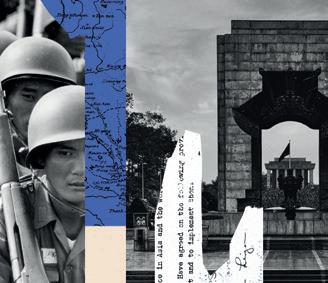
18 08
Behind the Scenes
Unveiling the creative process and untold stories behind the making of our captivating brand video
28 34
Briefing
The latest news from the world of luxury travel
One Step at a Time
Exploring the transformative power of walking safaris in Zambia


Lessons from Vietnam Vietnam's journey of healing and forgiveness in overcoming the wounds of the Vietnam War
Riding the Wave
How the vibrant surfing community is reshaping the narrative of two Portuguese fishing towns

40 50 56
66
Take the Wheel
Discovering Puglia, in a vintage car, unravelling the region's charm and hidden gems along the way
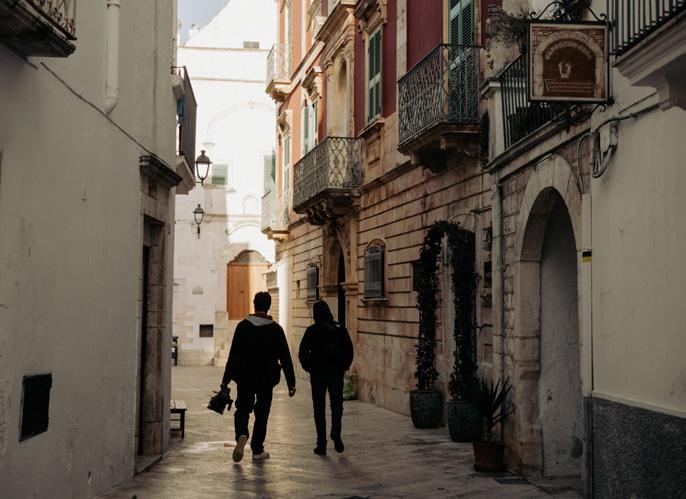
68
Deeper than the Sea
Emily delves into the profound depths of a transformative expedition to the frozen continent
72
Almost Human A visit to Mahale Mountains National Park reveals the astonishing parallels between chimpanzees and our own species
76
Uruguay: Beyond the Obvious Writer Terri brings us through the undiscovered treasures of Uruguay
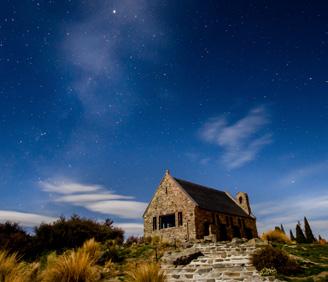
80
How I Travel
Jacada client Alexandra Hom tells us about her poignant journey to South Korea
84
Taste of Thailand
We chat with Chef Luke Farrell who transported the vibrant flavours of Thailand to his restaurants in the heart of London
The Inspiring Women of Guatemala
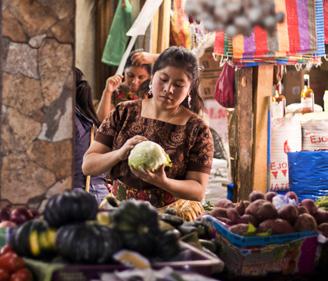
Celebrating the remarkable stories and achievements of inspiring women who have left an indelible mark on the country
Written in the Stars
Embark on an extraordinary journey through the celestial realm
4 5 CONTENTS
CONTENTS
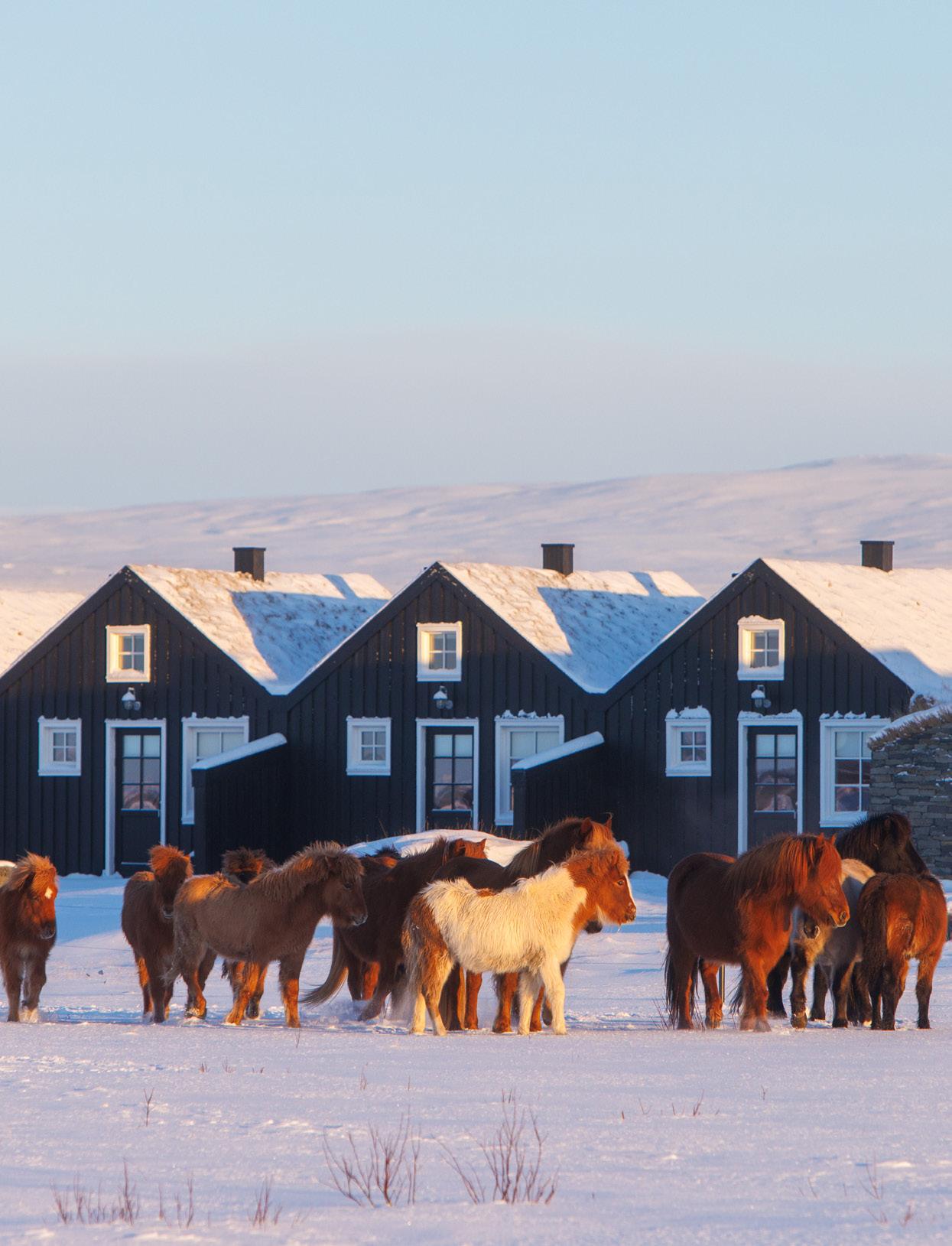
7 PAGE TITLE 1 Boarding Call 08 Briefing 10 Embracing Sustainability 14 Tokens of Travel
BRIEFING
Openings and news in the luxury travel world.
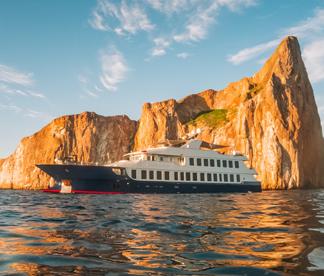
JACADA CELEBRATES 15 YEARS
March 2023 was a special month for Jacada Travel as it marked our 15th anniversary. For this occasion, we all gathered at our London headquarters for a week of celebration. Our travel designers and other team members from across the world got to meet (some for the first time) and honour one another's work over the past years.
NEW IN THE YACHT WORLD
IN BRIEF
This year, Wilderness' Bisate Reforestation Programme in Rwanda will have planted a record 100,000 indigenous trees. The purpose of this conservation initiative is to return the surrounding area to its natural forest state, thereby providing the indigenous habitat and sanctuary that mountain gorillas and other species require to exist and thrive.
Kangaroo Island's Southern Ocean Lodge in Australia is set to reopen this December after being destroyed by bushfires in 2020. SOL 2.0 will retain the original lodge footprint with 25 elegant guest accommodations, as well as fascinating new amenities such as the addition of an ultrapremium suite.
2023 marks the 70th anniversary of the first James Bond novel. Ian Fleming's 12 book series sees the spy travel to some of the world's most glamorous locations, many of which are some of Jacada’s favourite destinations.
SIX SENSES ROME IS HERE

Ecoventura's newest sustainable luxury yacht, Evolve, set sail for the first time on January 15, 2023. A sister ship to Origin and Theory – the only luxury yachts sailing the Galápagos Islands that are members of the prestigious Relais & Châteaux association – the upgraded vessel features 10 designer staterooms offering panoramic views, with spacious cabin options for families.
INTRODUCING WILDERNESS MOKETE
We’re proud to present Wilderness Mokete, set to open this September 2023. Rising from the savannahs of the vast Mababe wetlands, located between the Okavango Delta and Chobe National Park, the camp sits in one of the world's most remote and untamed areas. Check in while you can, because this limited-edition safari lodge will only be available for two years.
This luxurious hotel in the Italian capital was designed by Spanish architect Patricia Urquiola and is the newest addition to the Six Senses portfolio. The former palazzo is located in the centre of Rome, close to the majestic façade of San Marcello al Corso Church. Discover 96 luxury rooms and suites split among 12 accommodation types inside, where the essence of Roman traditions has been preserved.
A SERENGETI SAFARI UNLIKE ANY OTHER

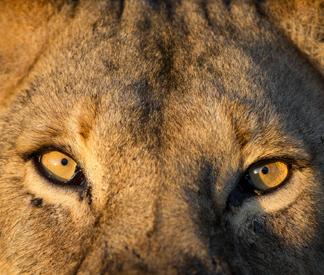
Opening mid-July 2023, Wilderness Usawa Serengeti promises front row seats to Africa’s Great Migration. This new luxury mobile camp will follow the wildlife migratory route within Tanzania's legendary Serengeti National Park.

9 BRIEFING
8
Embracing Sustainability
We’re taking an exciting leap when it comes to keeping responsible travel at the forefront of our trips, by introducing our in-house Positive Impact Coordinator.
It’s a notion that isn’t new to Jacada.
‘Positive impact travel has been part of our dna since the very beginning in 2008,’ says Founder Alex Malcolm, as we think back on how Jacada has championed the idea of conscious travel. We believe that our travels have the ability to create a positive impact on the places that we visit, and when we do it right, we can change the world.
Alex goes on to say that ‘knowing that you’re making a difference simply by being there and supporting these projects helps you to experience destinations on a deeper level’.
The next step in Jacada’s growth has been a long time coming, and to keep us on track to always do better we’ve introduced a new and exciting role to the team.
Natalie Lyall-Grant joins us as our Positive Impact Coordinator. After spending 12 years working in travel, living in countries all over the world - Vietnam, Sri Lanka, Australia and Indonesia to name a few - Natalie was inspired to jump head first into responsible travel.

‘After seeing some of the benefits of sustainable tourism first-hand on commu-
nities and environments during my travels, I knew it was something that I wanted to be a part of,’ says Natalie as we sit down with her at Jacada hq
The role will see her immersed in the finer details; taking stock of the types of trips we create, the local partners we work with and finding ways to constantly improve.
‘I want us to take a longer-term approach to ensure that future generations are also able to enjoy the kind of high-value low-impact travel that Jacada offers today.’

‘When travel is done responsibly, it can have a positive impact on the environment, on host communities, on those who travel, and of course on the many people that are employed both directly and indirectly through tourism. Its benefits are almost infinite,’ says Natalie.
So how can we endeavour to be more responsible travellers? ‘There are a multitude of ways. For example, it’s in our hotel choices, how we engage with host communities, how we interact with wildlife and how much waste we create as we move around,’ she tells us. ‘This is where Jacada steps in.’
10 11 BOARDING
CALL EMBRACING SUSTAINABILITY
Right. Natalie LyallGrant has joined the team as Jacada’s new Positive Impact Coordinator.
We take the weight off of your shoulders, by providing you with the knowledge and advice you need to feel empowered to make better choices. As Natalie puts it, we seek out accommodations, guides, transport and partners who are ‘purpose-driven, and who can demonstrate commitment to both the environment and their local communities’.
At Jacada, we are able to take our clients beyond the concept of ‘responsible travel’ and into the realms of positive impact travel, which Natalie explains is ‘where trips contribute to longer-term goals: rebuilding ecosystems, solving complex social issues or protecting threatened species and habitats’.

When asked what industry breakthroughs she is most excited about, Natalie encouragingly has a lot to mention. There’s especially promising news from our parent company Wilderness, who have partnered with Carbon Ark and the Zambian Ministry of Green Economy and Environment to launch a carbon store and sequestration project that will aim to protect millions of hectares of game management areas around Kafue National Park.
‘The area has been degraded by logging for charcoal production, as well as burning for farming and hunting,’ she explains. ‘But it’ll now be protected, creating over 1,000 community jobs as well as restoring areas bordering the Kafue National Park and helping with the important work of decarbonising.’
Natalie’s top picks for positive impact travel
1.
By choosing to stay at Tswalu, South Africa, you can become part of their conservation effort without compromising on luxury. Located on the southernmost edge of the Kalahari, Tswalu restores vital habitat to ensure biodiversity can flourish again, and continuously supports local communities. Guests also have the option to sponsor young rhinos to support the camps overall rhino conservation goal.


2.
Take a once-in-a-lifetime trip to the Galápagos Islands for incredible wildlife encounters. Arrive at the airport, run completely on solar and wind power, with strict entry regulations in place to protect the fragile marine haven. Stay at the breathtaking Galápagos Safari Camp constructed sustainably to keep the human footprint light. The camp also makes use of rainwater treatment and solar panels throughout.
3.
Stay at the Torfhús Retreat for a breathtaking, remote experience of Iceland and the Northern Lights. Committed to sustainable practices, the retreat is powered entirely by hydroelectric power and geothermal energy. The real star of the show is the local cuisine - think fruit and vegetables grown in local greenhouses, seafood from coastal fishermen, and beef and lamb grazing local mountains.
4.
Visit Shinta Mani Wild a beautiful eco camp in Cambodia throwing a lifeline to the Cardamom National Forest. Home to some of Cambodia’s most endangered species, the camp employs a dedicated Wildlife Alliance ranger to patrol the 865 acres of land, to arrest poachers and loggers, and release captured wildlife, among a host of other conservation tasks. Sustainability is at the centre of every decision - from employing staff from local villages, to celebrating traditional Khmer treatments in the spa.
For more information email your questions to hello@jacadatravel.com
12 13 BOARDING CALL EMBRACING SUSTAINABILITY
Left and below left A rhino in its natural habitat. Tswalu Tarkuni Lodge restores vital habitat and supports communities.
Right Shinta Mani Wild in Cambodia helps to protect Cardamom National Forest.
“We take the weight off of your shoulders, by providing you with the knowledge and advice you need to feel empowered to make better choices.”
Tokens of Travel
Having lived in and travelled to some of the most awe-inspiring places around the world, the Jacada team has a keepsake or two with a story to tell.
Souvenirs have the wonderful ability to rekindle travel nostalgia – they are memory devices and capture moments otherwise lost to time. Whether sentimental, funny or just downright bizarre, they have the wonderful ability to commemorate destinations we want to remember forever and are often the start of a brilliant anecdote when we return. Just how a seashell held to your ear might transport you back to a joyful day by the ocean, travel memorabilia can also be enough to recall cherished memories of the places and people that helped make a trip unforgettable.
With some epic adventures under their belts, we’ve asked some of our team members at Jacada to share their favourite travel mementos as well as the meaningful stories behind them.
What is your memento? My most treasured travel souvenir is a traditional Berber jacket that was gifted to me in Morocco.
Tell us the story behind it: I visited the beautifully blue village of Essaouira during my first solo trip. As the weather is cooler in February, I was wrapped up in a sweatshirt that had my surname written on it. Whilst wandering, I started chatting to an old Moroccan man, and somehow spent the next few hours discussing the world and drinking extremely sugary tea from the back of his shop. At the end of our conversation, we swapped jackets as a token of our new friendship - his was a thick Berber jacket made of camel
hair, with a very distinct smell. Later that evening whilst out for dinner, we spotted each other again - he was in my hoodie, and I in his jacket! It’s such a funny memory to look back on, and I can confirm that the jacket still stinks of camels to this day.
What impact has this had on you? It was the perfect bit of Morocco to take home with me. Travel is all about the connections you make with people, and this moment was the first insight I had into how welcoming people can be. Although we came from different backgrounds, we had so much in common. It was such an authentic, random and special moment that I’ll carry with me forever.
What is your memento? A beaded sea turtle and a wooden dugong from my first Jacada trip to Mozambique.

Tell us the story behind it: During a boat trip to explore the beautiful islands around Bazaruto, I was utterly terrified to snorkel in the open water, truly scared. After strongly considering the option to stay on the boat with a glass of bubbles, I faced my fear head on and jumped in. The whole experience beyond this was breathtaking - least of all because breathing through a snorkel can be so challenging and I was so proud of myself for seizing the opportunity. Later that day, I was able to see dugong swimming off the side of our catamaran.
What impact has this had on you? I sit the turtle and dugong on my desk so that I can remind myself of the incredible experiences that Jacada are able to give people. Experiences like mine are what travel is all about – they stay with you long after you return home.


They’re reminders to do things that challenge you, and to step out of your comfort zone whenever possible. The whole experience of facing my fears had such a profound impact on me. It also reminds me to be comfortable enough to admit that you’re afraid, rather than keeping the feelings bottled up. I felt encouraged and supported to literally take the plunge.
What is your memento? A mask from the Sant’Antonio Festival in Sardinia.

Tell us the story behind it: I was visiting a friend in the small Sardinian town of Mamoiada to take part in the Sant’Antonio celebrations. During the ceremony a parade hypnotically dances through the town, depicting one group, the Mamuthones, being chased by another, the Issohadores.
The Mamuthones are draped in thick, fur outfits and carry heavy cow bells, their faces covered by grotesque masks carved from heavy materials and painted black. The opposing Issohadores wear white masks and bright red jackets. What I love most about the parade is the mystery surrounding its origins
Senior
- some say that the Mamuthones represent past invaders and the Issohadores are celebrating their victory; others say that it is a tradition marking the beginning of spring.
What impact has this had on you?
I feel really lucky to have taken part in the celebration because only few visitors have the chance to witness this special event. I value authentic cultural traditions that have stood the test of time, and think it’s a beautiful thing to be a part of. It is very easy for travellers to stay in comfortable, sanitised bubbles when they travel but this experience introduced me to an unexpected narrative which turned out to be surprising and refreshing.
What is your memento? Two photographs of some life-affirming moments.
Tell us the story behind it: The first photograph is from 2007, on a trip that took the tour group I was leading from Buenos Aires, Argentina, to La Paz, Bolivia. Little did I know that in this tour group I would meet my now wife, Elaine. This is the first picture we have together, and is from a day spent cruising the Uyuni Salt Flats.
The second is a photograph from 2017, and is of the two of us walking along a road by Tokavaig Beach, on the Isle of Skye in Scotland, just moments after we eloped. The ceremony itself was extremely private and intimate, witnessed only by a herd of sheep and a
bus full of tourists. It’s a funny memory, and captures such an important moment in my life.
What impact has this had on you?
I’ve lived such a nomadic life, and I think these photographs are proof that I wouldn’t be where I am today without the adventures I’ve had. I want my daughter to share my curiosity for travel, and to understand that there are a lot of places where you can fit in.
These are moments that shaped me into the person I am today. When I look at these photos, I feel happiness. When we met in 2007, I didn’t know what would happen next, so they remind me that life is always bringing good things my way.
14 15 BOARDING CALL TOKENS OF TRAVEL
“Just how a seashell held to your ear might transport you back to a joyful day by the ocean, travel memorabilia can also be enough to recall cherished memories of the places and people that helped make a trip unforgettable.”
Terri Dunbar-Curran Content Executive
David Corvacho Puente
Travel Designer for Latin America
Heather Evans Head of Client Experience
Pierre Fauquemberg Travel Designer for Europe
← Discover the captivating tales and cherished mementos of the Jacada team.

17 PAGE TITLE 2 Features 18 Behind the Scenes 28 One Step at a Time 34 Lessons From Vietnam 40 Riding the Wave 50 The Inspiring Women of Guatemala 56 Written in the Stars
THE SCENES
On location shooting a new brand video for Jacada Travel.
The marketing team have been on the road, creating a brand video that celebrates what we love about travel. In this photo journal, take a peek behind the scenes in two of the stunning locations we visited to see exactly what went on and more of where the story was brought to life.


18 FEATURES
BEHIND
First stop: Puglia
Way down south at the heel of Italy, Puglia is one of our favourite regions. The endless coast flits between rocky drama and sandy beaches and contrasts beautifully with whitewashed towns and rolling hills.

Puglia is a world of its very own, inviting you to spend days lazily exploring the landscape and indulging in some of the best seafood on the planet, washed down with a glass of excellent local wine. With a history spanning millennia and plenty of surprises round each corner we know we’ll be back before long.
Top left. Few things can create as much drama as a cliff, and Polignano a Mare does not disappoint. Watching the light change over the buildings as the waves crashed in was one of the team’s Puglia highlights.

Bottom left. Wandering the streets of Locorotondo in the early morning. Golden hour granted a moment of peace before the crowds assembled.
Top right. Making connections is at the heart of travel. Tonino is a woodworker based in Ostuni. He carves his creations from ancient olive wood. Spending time chatting to him in his workshop provided a powerful insight into his art.
Bottom right. Tonino has been creating his wooden pieces for decades and takes pride in every single one of his creations. No item leaves his workshop without a final buff and check for quality.


20 21 FEATURES BEHIND THE SCENES
Left. Puglia’s local residents pause and chat in the sunshine. Puglia is known for its dependable weather, with a mediterranean climate that sees hot summers and only mild winters. The sun shines most of the year round.

Top right. A man stands by a boat dock in Savelletri di Fasano. Puglia is renowned for its coastline and has a rich history of seafaring activity.

Bottom right. Like many of our travellers, the Jacada team is always on the hunt for truly exceptional, local cuisine. Puglia is home to some of the best seafood in Italy, and our explorations turned up a few true gems.

A Puglia Checklist
Sample incredible seafood at LAMARE - all fresh, local produce cooked to perfection by one of the area’s favourite chefs
Give your legs a rest and explore in style with a vintage car tour. Find out more on page 66
Learn how to prepare your own Italian feast in a historic farmhouse kitchen with Mara and Marina Take home some of the ceramics that Puglia is famous for from Enza Fasano in Grottaglie"
← Watch the full brand video here
22 23 FEATURES BEHIND THE SCENES
Next stop: Botswana
Botswana is always high on our list of incredible destinations. To bring the story to life the team visited two beautiful camps: Wilderness Duma Tau on the banks of the Osprey Lagoon and Wilderness Mombo in the iconic Okavango Delta.

Top left. The team were blown away by the incredible wildlife that greeted them on the shoot. Most notably, they were treated to a herd of elephants crossing the Linyanti river, right in front of the camp.

Bottom left. Often our travels are brought to life by the cross pollination of arts and culture that we experience. The team were enthralled by the famous basket weaving art form of Botswana, created from mokola (palm tree fibre).

Top right. Experiencing one of Botswana’s magnificent sunsets from the comfort of a private barge tour is an entirely profound experience.
Bottom right. The team had the pleasure of meeting Gabby, a local basket weaver and expert in her craft. With her many years of experience, she made what is a very intricate process look easy.

24 25 FEATURES BEHIND THE SCENES
Left. The inspiring guides we meet when we travel become a crucial part of our stories. Zee and his colleagues have a true passion for sharing their knowledge, and are vivacious in their love of the country and all it has to offer.

Top right. Wilderness Mombo and Little Mombo are the perfect bases for up close encounters. Expert guides are at hand to share their wealth of knowledge, and become such a significant part of our brushes with wildlife.

Bottom right. Early morning jaffles (toasted sandwiches) are cooked on the fire to bring energy for a long day filming at Wilderness Little Mombo.

26 27 FEATURES BEHIND THE SCENES
One Step at a Time
Zambia has been forging the path towards sustainable tourism for decades. In the 1950s, a British man named Norman Carr pioneered a forward-thinking concept here: to promote conservation and local empowerment through tourism. Before long, his innovative approach and lowimpact walking safaris were embraced across Africa.

Words: EMILY OPIE

28 29 FEATURES
Zambia is simultaneously spectacular and humble. It’s home to Kafue National Park, one of Africa’s largest and oldest protected areas covering over 5.5 million acres. The famous Mosi-oa-Tunya (Victoria Falls) cascades across its southern border, fed by the meandering Zambezi river. And it has played a hugely influential role in the history of conservation.
An incredibly diverse array of wildlife can be found across Zambia’s vast swathes of protected areas. All of the Big Five reside here, and safari-goers are likely to see massive herds of elephants, hundreds of species of birds and endless other animals. Its seemingly infinite savannahs set the scene for exhilarating experiences.
Part of Zambia’s allure as a safari destination is due to its large collection of national parks (20 at the last count) and private reserves, which are central to conservation. Kafue and South Luangwa are known for sightings of the notoriously elusive leopard, while South Luangwa and Liuwa Plain host healthy populations of endangered African wild dogs.
Thanks to Zambia’s successful breeding programs, small numbers of both black and white rhinos can now be found in the parks of Mosi-oa-Tunya and North Luangwa. They were reintroduced here after being declared completely extinct in 1998, primarily due to poaching.
The grasslands, wetlands, rivers and forests that make up Zambia’s landscapes are breathtakingly wild and rugged. This beauty is only intensified by its
remoteness; far from the crowds, safaris here feel more personal and attuned to the surroundings.
The concept of a safari that works in harmony with the environment was pioneered here by the British conservationist Norman Carr. He implemented a groundbreaking approach to sustainable safari practices in the 1950s, and its influence can still be seen in Zambia's tourism industry today.

A history of hunting
Today, more than 40% of Zambia’s land is protected by national parks and reserves, creating an abundance of natural wildlife havens. But this hasn’t always been the case. In the early 1900s, there was a troublesome tourism trend that threatened the natural equilibrium: hunting safaris.
During this era, people travelled to Zambia (and many other parts of Africa) for trophy hunting. They coined the term ‘Big Five’ as they set out to prove their bravery by slaying the strongest creatures. In addition to their ethical implications, these unregulated hunting safaris gravely endangered fragile ecosystems and the species that inhabited them.
The hunting safaris of the 1900s also had negative social implications, as they often exploited local residents. There are reports of hunters offering enticing financial incentives to local leaders in exchange for permission to hunt on their land – leaving long-term sustainability and conservation out of the question.
That’s where Norman Carr came in. He challenged this paradigm and attempted to shape safari tourism into a positive force. In his view, wildlife conservation and tourism didn’t have to be at odds; in fact, they could be mutually beneficial.

Who was Norman Carr?
Norman Carr was born in 1912 in the British concession of Chinde, part of modern-day Mozambique. After completing his education in England, he returned to Africa in 1930. Over the next several years he worked as an elephant control officer, a captain in the King’s African Rifles and a game ranger in the Luangwa Valley (then Northern Rhodesia).
Although Carr’s vision of sustainable safari tourism was innovative, the concept of conservation wasn’t new. Africa’s first national park was established in 1925 in Virunga (then the Belgian Congo) to protect mountain gorillas – nearly 25 years before Carr began his own sustainable safari mission in Zambia.
During the late 1940s Carr worked with Chief Nsefu of the Luangwa Valley, convincing him to allow
tribal territory to be part of a conservation zone that would later become South Luangwa National Park. Nsefu Camp was built in the conservation area and became the first safari camp in modern-day Zambia to promote Carr's vision of sustainable tourism. In an effort to support local residents and pay them back for the use of their land, Carr ensured that proceeds from Nsefu Camp went to the local community. He continued this support for the rest of his life, most notably through his Kapani School Project. Carr was completely at home in the wilderness. His years of experience afforded him a deep understanding of nature and a unique connection to it. His goal was to protect wildlife and habitats, but he also wanted travellers to learn about the natural world while minimising their impact on the environment.
30 31 FEATURES ONE STEP AT A TIME
Left.Walking safaris open up the opportunity to experience wildlife from a whole new perspective. By being on the ground, you can quite literally walk in the footsteps of the wildlife, and learn more about how guides connect with the land.
Right. By stepping out of the protection of a vehicle, it’s crucial to trust and listen to your guide. This style of safari puts you right at the heart of all that nature has to offer.
To this end, Carr decided to share his own regular ‘bush walks’ with guests at Nsefu Camp, making them a regular part of the camp’s activities – and they proved to be a resounding success.
Leave only footprints
The low-impact walking safari encapsulates the essence of a sustainable safari activity. Feeling the ground beneath your feet, letting your senses come alive and treading carefully through nature is often the highlight of any wildlife adventure.


Until Carr introduced his bush walks, safaris had almost always involved vehicles. This ingeniously simple concept made it possible for an intense experience to leave only a light footprint. It was a tremendously positive development – and not only in terms of sustainability.
Norman Carr’s bush walks eventually turned into the walking safaris we know today. Along with neighbouring Zimbabwe, Zambia is now considered to be the ultimate walking safari destination – thanks not only to its incredible wildlife and landscapes, but also to the nostalgic spirit and legacy that Carr left behind, which are still palpable decades later.
Despite the success of walking safaris, classic game drives remain popular. This is partly because of their convenience; a jeep makes it possible to cover a lot of ground quickly and get close to wildlife safely, with an accelerator pedal at the ready to speed away if needed.
However, jeeps can also disrupt the land and wildlife. Many safari camps make an effort to minimise these negative effects by operating with care and consideration, but there’s no denying that a walking safari makes a much more gentle impact.
The aim of any safari is to see incredible wildlife, but a walking safari takes the experience to another level. It offers a heightened sense of meaning and connection to the land, animals, guides, trackers and fellow travellers. Following the trails of large animals gives you an inside look at how they interact with their environments.
Moving slowly on foot presents an opportunity to notice minute details and smaller species like insects, reptiles and birds. With no engine noise to stifle the sounds of nature, it’s possible to hear rushing wind, birdsong, flowing rivers, the sound of an elephant’s ears flapping or a set of tiny impala hooves on the hard earth as they rush back to the herd.
Guides, rangers and travellers are more vulnerable while on foot, away from the relative safety of the jeep. This makes communication and understanding especially vital in order to safely and respectfully explore the habitats of some of Africa’s largest animals.
There’s an enormous sense of responsibility for one another while on a walking safari, as well as an emphasis on our responsibility to respect the world around us. And ultimately, there’s no better way to gain first-hand insights and knowledge from an experienced guide.
A lasting legacy
Norman Carr’s walking safaris have continued to shape the face of safari tourism in Zambia, Zimbabwe and many of Africa’s other wildlife hubs. Traversing these ancient lands on foot is one of the most authentic and sustainable ways to explore and engage with them.
This is an attractive prospect for many wildlife enthusiasts. The demand to get out of the jeep and onto two feet has been met by many camps and lodges all over East and Southern Africa that now offer walking safaris.
When we combine travellers’ desire to witness incredible wildlife with Carr’s conservation values, protecting natural habitats for future generations becomes an inspiring possibility. Walking safaris are a shining example of sustainable simplicity. By taking away the jeep, the fuel, the speed and the checklist of big game sightings – even for just one moment during a multi-day trip filled with activities – it’s possible to enhance a wildlife experience while protecting nature at the same time.
Want to explore Zambia on foot? Get in touch with our Africa team to start planning. → victoriasaner@jacadatravel.com
32 33 FEATURES ONE STEP AT A TIME
Left. Walking safaris remove any boundary between you and the wildlife, allowing a shared sense of harmony that’s difficult to compare.
Above. The slower pace of a walking safari allows a greater sensory experience than is possible from a vehicle. Hear undisrupted birdsong, and get a closer look into the micro world of the plains.
Lessons from Vietnam
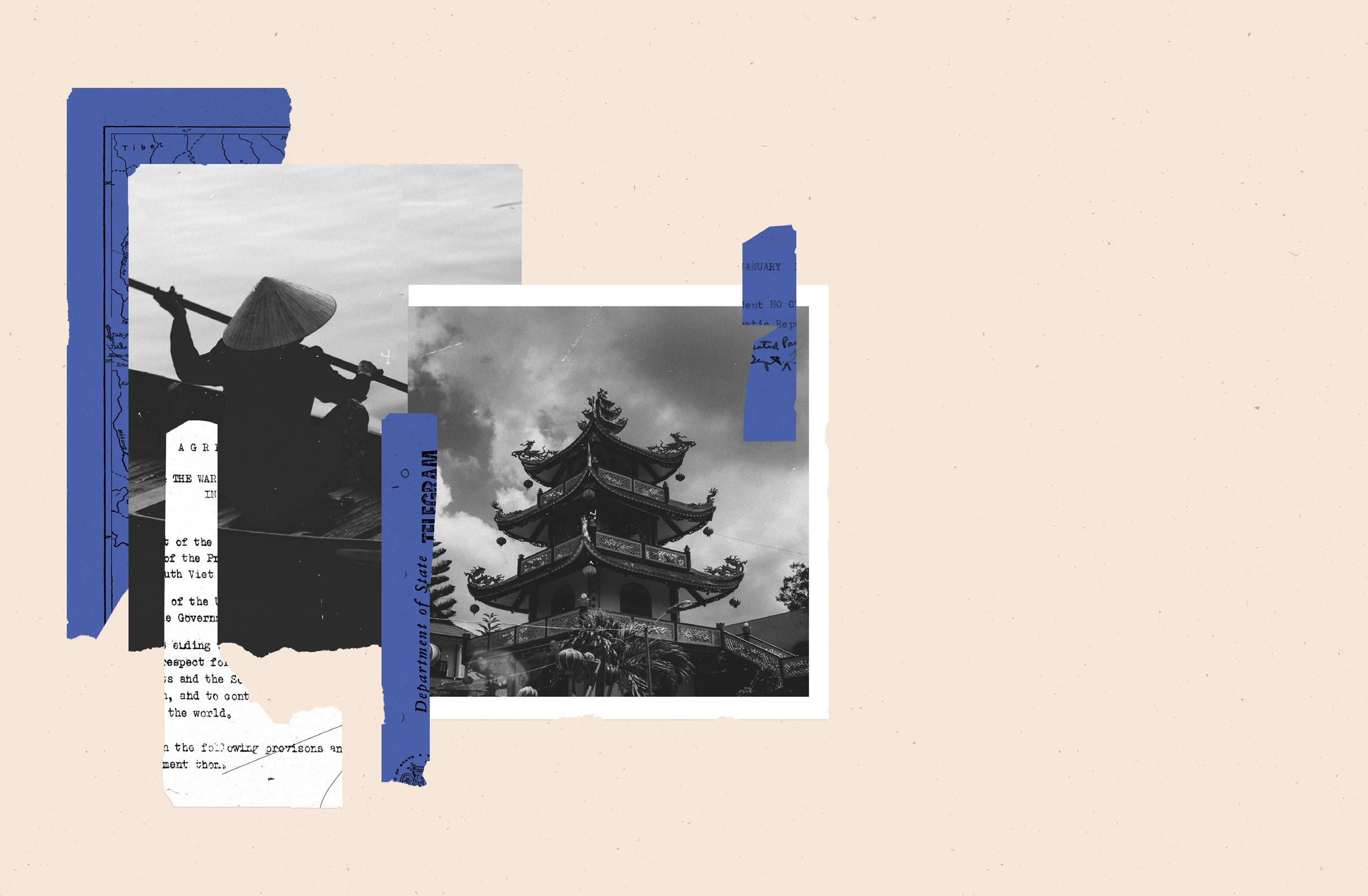
Just as great teachers have a lasting impact on their students, some destinations truly leave their mark on us. Brought to its knees by a costly and controversial conflict, Vietnam is a prime example of a place we can learn from. Today its people are making powerful strides toward recovery, proving the potential to turn tragedy into positive lessons.
Words: BEVERLEY LENNON
35 LESSONS FROM VIETNAM 34 FEATURES
Aland of beautiful chaos, big smiles and delicious phở, Vietnam never ceases to amaze. But a peek behind the curtain reveals decades of tremendous damage. Although violence had long been present in the nation, the Vietnam War escalated the conflict to a terrifying scale.

In the years prior to the war, Vietnam had endured a destructive colonial past and a protracted campaign of resistance against invaders. The Vietnam War originated in the struggle for independence and the division of the country into two separate entities: North Vietnam, led by communist forces, and South Vietnam, supported by the United States and other anti-communist nations. In the 1950s, the communist forces of North Vietnam began an insurgency against the South Vietnamese government.
The Vietnam War would claim millions of lives before ending in 1975 when the South Vietnamese capital of Ho Chi Minh City (formerly known as Saigon) fell to the North Vietnamese army, prompting the US to evacuate its embassy in a dramatic rush that was photographed for the world to see. This event came to be known as the Fall of Saigon.
The Fall of Saigon had a significant influence on Vietnam’s citizens, many of whom had endured years of suffering during the war and now faced an uncertain future under communist rule. And nearly 50 years later, the legacy of the conflict is still shaping the country’s identity.
Vietnam as we know it today
Fast forward half a century, and Vietnam has emerged from the destruction of the war. Today the country exemplifies economic development in South East Asia, and is regarded by many as one of the region’s most dynamic emerging nations, if not the most. According to the World Bank, Vietnam ‘aims to become a high-income country by 2045’. By all accounts, the country has moved on – not only economically, but also socially and politically.
As a tourism destination, Vietnam is chaotic and charismatic. It boasts a world-class dining scene,
dazzling landscapes and incredibly welcoming locals. Looking back, it’s hard to believe that this was once a crisis zone – but its difficult past has not been forgotten. Battlegrounds, cemeteries and museums tell the country’s story and help to frame its history.
As George Santayana once said, ‘Those who cannot remember the past are condemned to repeat it.’ When a person makes a mistake and doesn’t learn from it, they’re likely to make it again – and this holds true on a societal scale as well. Vietnam’s memorials emphasise the importance of remembering the tragedies that occurred here, and using the knowledge of the past to ensure a brighter future.
Today travellers can interact with history in former battle zones to gain a deeper understanding of the local context and a closer relationship to the people who experienced the war. These interactions bring history to life in a way that no textbook will ever be able to.
Deep within the dense jungles of Vietnam, hidden beneath the earth’s surface, lies a network of tunnels that hold secret tales of resilience. These are the infamous Củ Chi Tunnels, a testament to the ingenuity of the Vietnamese people during the war. The tunnels are a marvel of engineering – they stretch for over 100 kilometres, forming a complex labyrinth of interconnected passages, booby traps and hidden chambers.
These tunnels served as a lifeline for the Vietnamese guerrilla forces, known as the Viet Cong. They provided shelter, supply routes and communication channels, enabling the fighters to strike swiftly and then vanish into the earth, confounding their enemies. Visiting this living museum today is an unsettling experience. Still, one can’t help but admire the indomitable spirit, determination and resourcefulness of the Vietnamese people.
A visit to the former front lines of the Vietnam War offers a wealth of educational opportunities. It not only helps to shape our collective memory and perception of the conflict, but it also reminds us that – even in the worst circumstances imaginable – there’s always hope for forgiveness and healing.
37 LESSONS FROM VIETNAM 36 FEATURES
“Vietnam has chosen the route of healing, reuni cation and societal harmony throughout its post-war transformation”
Making peace
It’s been 48 years since the Fall of Saigon, and Vietnam’s recovery from this traumatic event and the conflict that preceded it is astonishing. Considering the unfathomable cruelty and anguish that its people endured, today Vietnam is unrecognisable.
Vietnam has chosen the route of healing, reunification and societal harmony throughout its post-war transformation, showing the rest of the world that it’s possible to transcend even the harshest barriers to forgiveness.

Through programmes like the Vietnam Veterans Memorial Fund and the Veterans for Peace organisation, former adversaries from both sides have come together to heal wounds and promote understanding.
By embracing reconciliation, Vietnam sets an inspiring example of how a nation can overcome the destruction of war and move forward. There is much to be learned from these everyday people whose scars are gradually healing as they make peace with the past.
Relations between the United States and Vietnam have improved immensely over the last few decades. Instead of trading bullets, the two countries now profit from a bilateral economic partnership. Vietnam has also welcomed thousands of American veterans of the war to its shores, signifying a massive step forward and a collective dedication to progress.
The power of travel
Although the Vietnam War ended long ago, the brutal conflict is still fresh in the memories of many. But as more and more curious visitors arrive in the country, that grief is gradually being replaced by a new sense of optimism. Vietnam is now utilising tourism to promote growth and stability throughout the country. To heal the wounds of war, it’s using the power of travel.
When properly planned and managed, tourism is the only industry in the world that takes nothing from a country, encourages education, promotes job development and nurtures peace. An increasing number of formerly war-torn nations and territories are capitalising on the travel industry to stabilise and boost their economies.
Northern Ireland is one notable success story, welcoming close to two million tourists each year. Rwanda is another role model, with one of the fastest-growing
economies in Africa. Closer to Vietnam, countries like Cambodia and Laos are also reaping the benefits of tourism.
Beyond its power to change the destination itself, a trip to Vietnam can also transform us as travellers. For those seeking a deeper understanding of this complex chapter in history, visiting Vietnam can be an illuminating experience.
Walking through the battlegrounds, engaging with locals and immersing yourself in the country’s rich culture offers invaluable insights. These experiences can challenge preconceived notions, foster empathy and provide a fresh perspective on the Vietnam War.
While history books often focus on statistics, strategies and politics, travel allows us to understand the war’s impact on an individual scale. By talking to locals – especially those who experienced the war first-hand – we gain a deeper understanding of their perspectives, struggles and resilience. Listening to the stories of Vietnamese veterans and witnessing the scars of war can be both humbling and eye-opening.
In stark contrast to the wartime narratives often associated with the country, Vietnam’s vibrant culture, ancient traditions and stunning landscapes also deserve attention. Among the bustling streets of Hanoi, the tranquil beauty of Halong Bay or the picturesque fields of Hoi An, we encounter a nation that has embraced its future without forgetting its past.
By interacting with the warm-hearted Vietnamese people, tasting their traditional cuisine and participating in local customs, we can begin to appreciate their resilience, unity and capacity to forgive. These experiences broaden our perspective, reminding us that a country is not defined solely by its history but also by the spirit and aspirations of its people.
The overall narrative of the Vietnam War may still be divisive, but in the meantime, the country continues to hum with life. Its sights, sounds, flavours, fragrances and, of course, its people have far more to teach us than any book or documentary – and these are the transcendent lessons that travel imparts.
Embark on a one-of-a-kind adventure through Vietnam with a veteran as your guide. Start planning → keithjarman@jacadatravel.com
“But as more and more curious visitors arrive in the country, that grief is gradually being replaced by a new sense of optimism.”
39 LESSONS FROM VIETNAM 38 FEATURES
Riding the Wave

Located less than an hour apart on Portugal’s Silver Coast, Nazaré and Peniche have plenty in common. They’re both traditional fishing towns that are home to world-famous waves, which have put them on the map within the surfing community. And as more people discover these destinations, they’re both being transformed by the power of the sea.
Words: MELISSA HAUN
The sun has barely risen, but people are already congregating on the cliffs. They stake out their spots and stare at the sea, wrapped in blankets and clutching cups of coffee. It’s a chilly morning in October, and a massive swell is on its way to Nazaré. In this tiny Portuguese town, a big swell means giant waves – sometimes more than 20 metres high. When the conditions are just right, people from across the globe gather on these cliffs, squinting out at the water to watch the world’s best big wave surfers make history.
Just down the coast, the town of Peniche has its own legendary waves. Here, however, they’re rarely more than a few metres high. Once a year, crowds descend on the sand of Supertubos beach to watch the Rip Curl Pro Portugal surf competition.
The surrounding area is also known as one of Portugal’s best places to learn the sport. Surf camps and schools are everywhere, creating a distinctive culture that stands in sharp contrast to the town’s
traditional identity; Peniche, like Nazaré, is an old fishing village at heart.

Both can be characterised as towns in transition: from a history dominated by fishing to a future where surf tourism reigns supreme. But for the moment, these two industries exist side by side – and that’s part of what makes this region such a fascinating place.
The Silver Coast
These days, Portugal often tops lists of the best places to travel. Millions of tourists come for its beaches, culture and cuisine – not to mention more than 300 days of sun per year. Most visitors head straight for Lisbon or Porto, the two largest cities and major tourist destinations.
Right in between these cities is where you’ll find the Centro (Centre) region and its stretch of coastline known as the Costa de Prata (Silver Coast). Around 240 kilometres long, the Silver Coast encompasses several beach towns that have long been favoured by the Portuguese for their summer holidays. But the area has only recently begun to attract international attention.
Until the past decade or so, the towns of Nazaré and Peniche were mostly known for their fishing industries. Seasonal tourism supplemented the local economies, but for the majority of the year the focus was on fishing. In the last several years, however, the popularity of both towns has skyrocketed – thanks in no small part to surf-related tourism.

Peniche’s past and present
On a small side street in the town of Peniche, a large mural depicts two men’s faces, spliced down the middle to create a single portrait. It reads, ‘A past of fishermen, a future of surfers.’ That’s the motto of Waterlost, a local brand founded by a surfer who descends from a long line of fishermen, and it encapsulates the town’s transformation.
Peniche is home to a bustling harbour, a fish market and multiple canneries where Portugal’s famous conservas are produced. It was also a hub of industrial whaling until the practice was banned in the 1980s. Fishing is still a central part of the local economy – and Left. Fishing is still a central part of Peniche’s economy.
42 43 FEATURES RIDING THE WAVE
Right. Nazaré’s lighthouse perches at the top of the cliffs, overlooking the legendary Praia do Norte.
the strong scent of raw seafood emanating from its industrial area serves as a constant reminder of this.
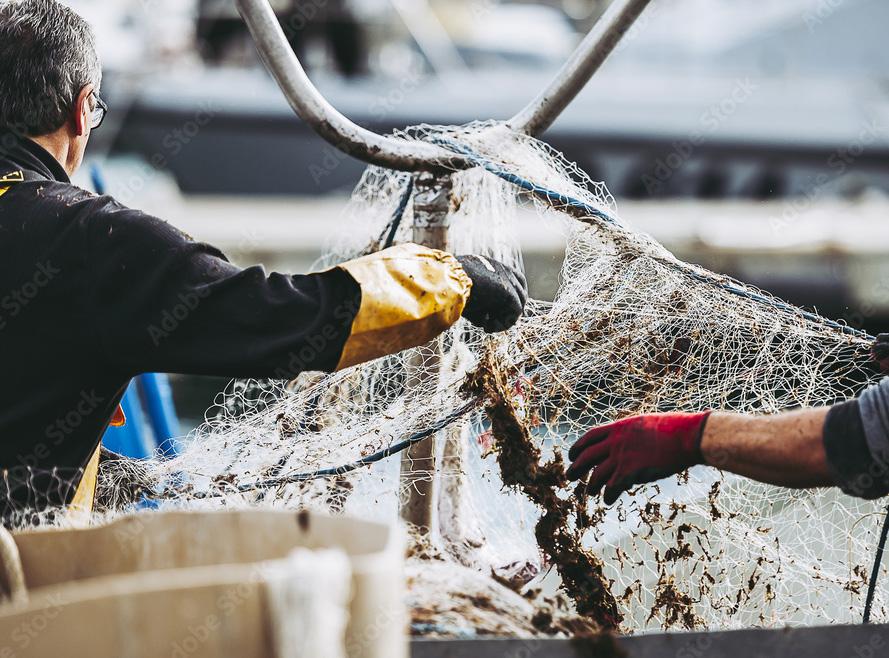

Hundreds of years ago, Peniche was an island. Over time the water and wind formed dunes between it and the mainland, transforming it into a peninsula with sweeping beaches stretching away on both sides. This is a surfer’s dream come true; the long and curving coastline means that no matter the conditions, there are always waves somewhere.
Since 2010, Peniche has hosted the Rip Curl Pro Portugal, an event on the World Surf League Championship Tour. It takes place on Supertubos beach, which is named after the huge tubos, or barrels, that form under certain conditions. The competition draws spectators in droves; in 2023, more than 51,000 people attended.
But Peniche isn’t just for the pros. Throughout the year, amateur surfers flock to its dozens of beach breaks to catch beginner-friendly waves. The adjacent towns of Baleal and Ferrel have blossomed with surf schools, shops, hotels, restaurants and bars catering to this particular type of tourism, which is centred around the sea.
Tourism and tradition
Not everyone who visits Peniche comes for the waves. It’s also known for beautiful beaches and the picturesque Berlengas islands, which are just a short boat ride away. But these attractions are most popular in summer, creating a pattern of seasonal tourism that used to leave the town relatively empty for the rest of the year.
Surfing, however, is a year-round sport. In fact, surf conditions are generally better here during the colder months; the most recent WSL events were held in March and October. This has added a new and lucrative angle to the local economy, extending the tourism season and making Peniche much more than a summer holiday spot.
As a result, it often feels like the town has a foot in two worlds. There’s a stark contrast between the traditional fishing culture and the modern tourism industry. The harbour and old town feel straight out of Portugal’s past, while in other areas you’ll find trendy cafés and a rotating population of international tourists and expats. Despite all of this, it seems that the city has managed to retain its identity while embracing the opportunities that tourism brings. Peniche can no longer be defined as just a fishing town, but it’s also much more than a tourist destination. As its reputation shifts and expands, its history and personality – along with its unmistakable scent – stubbornly remain.
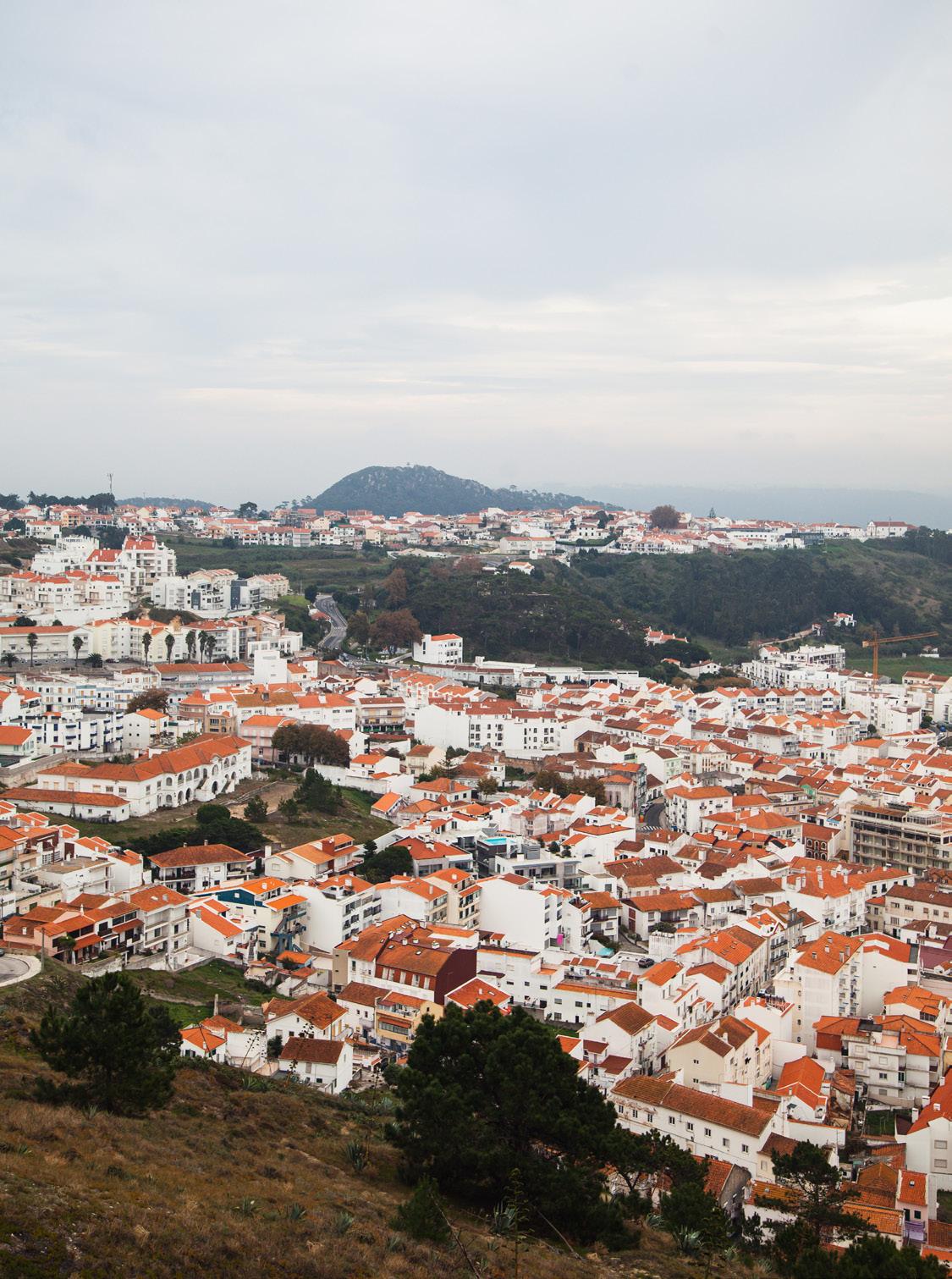
Nazaré’s new dawn
Just a 45-minute drive north is the town of Nazaré. Its name is Portuguese for ‘Nazareth’, reflecting its religious origins and traditional character. Like Peniche, this is an old fishing village. Brightly painted wooden boats dot the beach, and locals sometimes dress in old-fashioned fishermen’s clothing that pays homage to the past.
44 45 FEATURES RIDING THE WAVE
Left. Nazaré’s popularity has skyrocketed, thanks in part to surf-related tourism.
Above. Fishermen and women dry fish and mend nets while nearby, surfers catch epic waves.


46 FEATURES
A steep hill descends to Nazaré’s beachfront area, where the main tourist strip runs parallel to the sea. Here you might see fishermen’s wives supervising salted sea creatures strung up to dry in the sun. On one side, dramatic cliffs loom over the town. You can ascend them in an ancient funicular to reach the lofty village of Sítio and its famous lighthouse. The lighthouse perches at the very tip of the cliff, overlooking the legendary Praia do Norte. Straight ahead, an enormous underwater canyon lurks beneath the ocean’s surface – and this geological marvel is what creates the gigantic waves that make Nazaré much more than your average fishing town.
Winter waves
The surf culture of Nazaré is strikingly different from that of Peniche. Big wave surfers only show up here when there’s a good swell – and that’s a relatively rare
occurrence. You won’t find as many surf schools either; beginners might brave the waves on calmer days, but the main attraction is to watch world-class athletes conquer the giants.
Surf conditions are notoriously unpredictable, which means that official big wave competitions are usually announced just a few days in advance. Once the word is given, surfers and spectators from around the world drop everything and head to Portugal at a moment’s notice, inundating Nazaré with thousands of visitors – and earning it a global reputation.
This relatively new aspect of Nazaré’s identity has already transformed the town. It was only 2010 when people discovered that its massive waves were actually surfable. Since then, Nazaré has received an enormous influx of international attention. And even when the water is flat, tourists converge on the lighthouse and its tiny museum dedicated to big wave surfing.
Like that of Peniche, Nazaré’s economy has long been bolstered by a rush of seasonal visitors. But the rise of surf tourism has made the former low season just as busy as the summer – if not more so. The best months for big waves are November to March, and that’s when the largest crowds cover the cliffs above Praia do Norte.
This once-quiet fishing community is becoming a high-profile destination – and yet its original essence has largely been preserved. The magic of Nazaré is in the way it proudly maintains tradition, while capitalising on its unique appeal to a new generation of surfers and travellers.
Where old and new collide
At first glance, Peniche and Nazaré seem to be engaged in a process of cultural transition. Around one corner you might see a weathered fisherman or a woman carefully mending a net; around another, you could spot a tourist shakily catching their first wave or a pro surfer making it look easy.
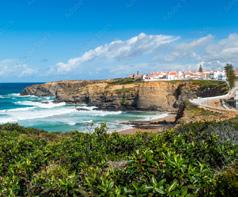

These two contrasting worlds exist at the same time. And while it might be tempting to characterise one as the past and the other as the future, the truth is that they’re both the present. Only time will tell if Peniche and Nazaré can maintain this balance, but for now they’re shining examples of how two seemingly contradictory realities can coexist.
There’s no denying that tourism – and surf tourism in particular – is shaping these communities. Every individual who visits Peniche or Nazaré is making an impact on its identity, and that can be a wonderful thing when done right. If visitors respect the traditional culture as much as locals do, it may be possible to embrace the new without erasing the old.
Tied together by the tides
Perhaps the reason that Peniche and Nazaré are able to simultaneously define themselves as fishing towns, beach resorts and surfing havens is that all of these things share a common thread: an enduring reliance on and respect for the ocean. The sea has always been at the heart of their identities – and it still is, albeit in new and unexpected ways.
The water is what ties together these towns’ past and future, from fishing and whaling to sunbathing and surfing. And whether you’re casting a net, going for a swim or riding a wave, it’s safe to say that you’re experiencing a splash of the Silver Coast’s authentic essence.
Portugal
For an unforgettable beach holiday, Portugal’s southern coast doesn’t disappoint. Rugged cliffs, sparkling waters and sunny skies make the Algarve a truly special destination.
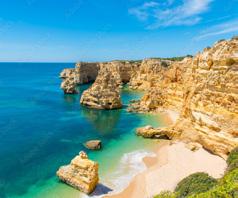
Located between Lisbon and the Algarve, this beautiful region is brimming with historic sites and stunning scenery. Alentejo is the perfect place to get a true taste of Portuguese culture.
Pack your bags for Portugal → murray@jacadatravel.com

48 49 FEATURES RIDING THE WAVE
Douro Valley Known for its terraced vineyards, rolling hills and lovely villages, the Douro Valley is a wine lover’s paradise in northern Portugal.
Algarve
Alentejo
More incredible places to visit in
Left. An underwater canyon creates the gigantic waves that Nazaré is known for.
The Inspiring Women of Guatemala
Guatemala has a long history of powerful women –from ancient Maya queens to contemporary artists and activists. It also has a turbulent past of colonisation, civil war and inequality – but in spite of these struggles, its rich culture, incredible history and inspiring individuals draw travellers year after year to experience this spectacular country.

50 FEATURES
Guatemala is a jewel in the crown of Central America. It was once the centre of the Maya civilisation and is hugely important in terms of ancient history. The country boasts three jaw-dropping UNESCO World Heritage Sites: the ruins of Tikal and Quiriguá and the city of Antigua. And when it comes to culture, there’s even more to discover.
When visiting Guatemala today, it’s impossible not to notice the influence of Indigenous culture. This isn’t surprising, given that it’s home to the largest population of contemporary Maya in Central America. Within the rolling highlands, surrounded by dramatic views of volcanoes, is where some of the strongest Indigenous communities can be found.

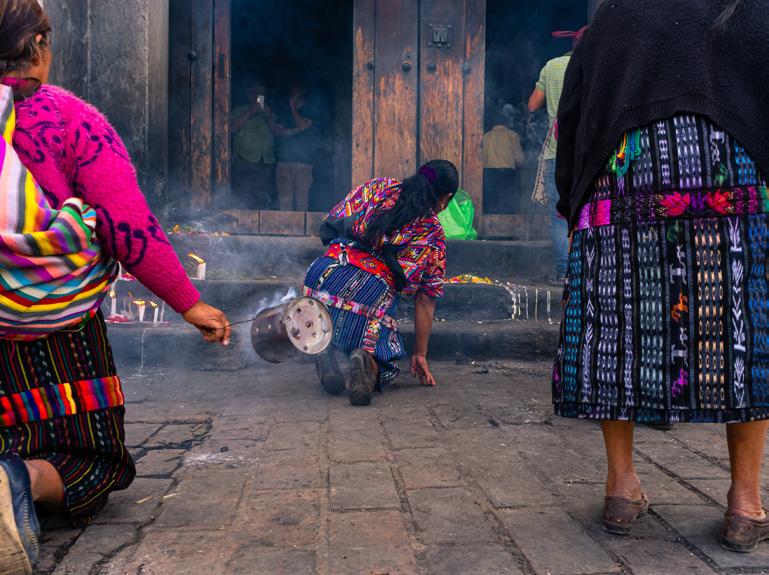
The bustling market town of Chichicastenango is a cultural centre of the K’iche’ Maya, and it’s jam-packed with local tradition. Here, even the elements of Hispanic culture are often enmeshed with Indigenous practices. For example, Maya priests perform rituals at the Iglesia de Santo Tomás, which combines Catholic and Indigenous spirituality. It sits at the top of 18 stairs, each one representing a month of the Maya calendar.
The popular tourist destination of Lake Atitlán is another stronghold of Indigenous culture. There are many settlements in this region, each representing one
(or more) of the 21 different Maya groups in Guatemala and displaying its own unique cultural heritage.
In Sololá, the capital of the region, almost the entire population is K’iche’ Maya. The city is also known by its pre-Columbian name, Tz’olojya. Many women who live here choose to wear traditional clothing such as long skirts, dresses, shirts, blouses, capes and huipiles.
The smaller town of San Juan Comalapa is the birthplace of the famous Kaqchikel Maya painter, Rafael Álvarez Ovalle. Brightly coloured murals adorn the town walls, depicting the traditions of local Indigenous culture. In the 1930s Ovalle decided to ‘teach the town to paint’ – and the tradition continues today.
Queens and warriors
Archeologists have uncovered almost 1,000 ancient Maya settlements in Guatemala, using advanced analysis to illuminate ancient history. Their exceptional work brings stories of kings, queens, priests and religious rituals to life, helping us to understand how society functioned at the height of the Maya civilisation.
Religious beliefs and rituals dominated almost all aspects of daily life during this era. The divine ruler, believed to be favoured by the gods – and almost a god himself – presided over the people with unquestioned authority.
But it wasn’t only kings who ruled. Archaeological finds have identified many Maya queens throughout the 3,000 years of the empire. Some of these queens came into power after being widowed, or by being the mother of a prince who was not yet old enough to rule.
52 FEATURES
Left. Maya women burn incense at Iglesia de Santo Tomas in Chichicastenango.
The first female Maya ruler was Lady Yohl Ik’nal, whose daughter, Lady Sak K’uk’, also became a queen. They were part of a strong royal lineage; Lady Yohl Ik’nal was the grandmother of the most powerful (and last) Maya king, Pakal the Great.
Not all queens were seen as stand-ins for their male counterparts; many were considered extremely powerful in their own right. For example, the Lady of Tikal reigned over the important religious and economic centre of Tikal for 16 years.
Others were considered fearsome, powerful warriors. Lady Six Sky was described as a warrior-king and Lady K’abal of Waká was given the title of supreme warlord, indicating that they may have participated in battles.
Visiting ancient ruins helps to breathe life into these fascinating historical figures. When you see Tikal rising out of the misty jungle or the enormous main temple of Yaxha, it’s not hard to imagine the people who once lived and ruled here. This is part of Guate-
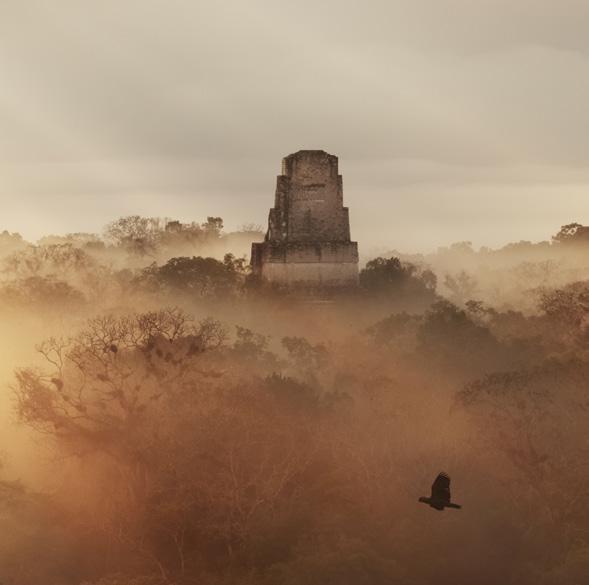
mala’s appeal to many travellers, and its heritage has shaped the tourism industry enormously.
A turbulent history
The Spanish invasion of Guatemala from 1511 to 1697 involved many long and bloody battles, and the eventual conquest stripped away many of Maya society’s defining features. Once the Spanish took power, Indigenous women had no employment opportunities and were limited to domestic duties.
A difficult period ensued for the Indigenous population. Many different regimes and rulers exploited, alienated and attempted to extinguish Maya culture, culminating in a terrible civil war from 1960 to 1996. The war gave way to what has now been recognised as a cultural genocide in which over 200,000 civilians (many of them Indigenous) were killed.
The Indigenous people of Guatemala – who make up 42% of the population – have suffered a brutal history and continue to experience oppression and dis-
crimination. Reports show that women suffer the most; Guatemala has one of the highest rates of femicide in the world, and literacy, pay and education rates are the lowest among Indigenous women and girls.
Despite these sobering statistics, there are countless inspirational stories of Indigenous women who stand up to fight against injustice, shaping Guatemala into a more positive place for everyone. From ancient Maya queens and warriors to modern musicians and Nobel Peace Prize winners, many influential women call the country home.
Women’s work
Today, Guatemala’s Maya heritage is protected and celebrated by a collection of inspiring female figures and everyday citizens. These women shape both their country and outside opinions of it through art, activism and other activities.
Rigoberta Menchú is a world-famous Indigenous human rights activist. As a Maya whose entire family was killed during the civil war, she’s dedicated her life to battling injustice and supporting Indigenous groups.
Menchú won the Nobel Peace Prize in 1992 and was made a UNESCO Goodwill Ambassador in 1996. In 1983 she published her global bestselling book, I, Rigoberta Menchú ensuring her voice and that of her community could be heard around the world.
Regina José Galindo is a performance artist from Guatemala City whose work has been greatly influenced by the civil war. Her extremely thought-provoking and often confronting exhibitions can be found in some of the most respected galleries across the globe.
Another inspirational Guatemalan woman who has reached an international audience is the singer-songwriter Sara Curruchich. Singing in both Spanish and her native language of Kaqchikel, she defends the rights of Indigenous Guatemalans through music.
According to Curruchich, ‘Being a woman in Guatemala is an act of resistance. Being a Kaqchikel Maya woman and an artist is, in itself, a political statement.’ Through her international tours and travel, she tells her story and that of her community to audiences around the world.
Rebeca Lane is a Guatemalan-born rapper who uses her voice to fight for women’s rights at home and
abroad. Feminist Central American rappers aren’t common, but she’s unafraid to tackle serious topics in her music in the hope of inspiring positive change. She’s gained a large following, particularly among younger audiences, and a reputation as a pioneering artist.
Shaping tourism and celebrating culture
Maya culture and history are incredibly important to Guatemala’s tourism industry. Most foreign visitors participate in some kind of cultural heritage activity, whether it’s buying a handcrafted souvenir, tasting an authentic Guatemalan tamal, exploring the highlands or visiting ancient ruins – and many of these activities rely on local women.
Women play an enormous role in shaping the tourism landscape, as well as preserving Indigenous heritage. When learning about Maya culture, the focus often falls on traditionally female-led activities like weaving, textile design, handicrafts and cooking.
Tourism shapes the lives of Guatemalan women not only by providing a source of income, but also by allowing them to celebrate their culture, keep their traditions alive and share their heritage with the world. This is just one more way that the country’s powerful female figures continue to influence its future.
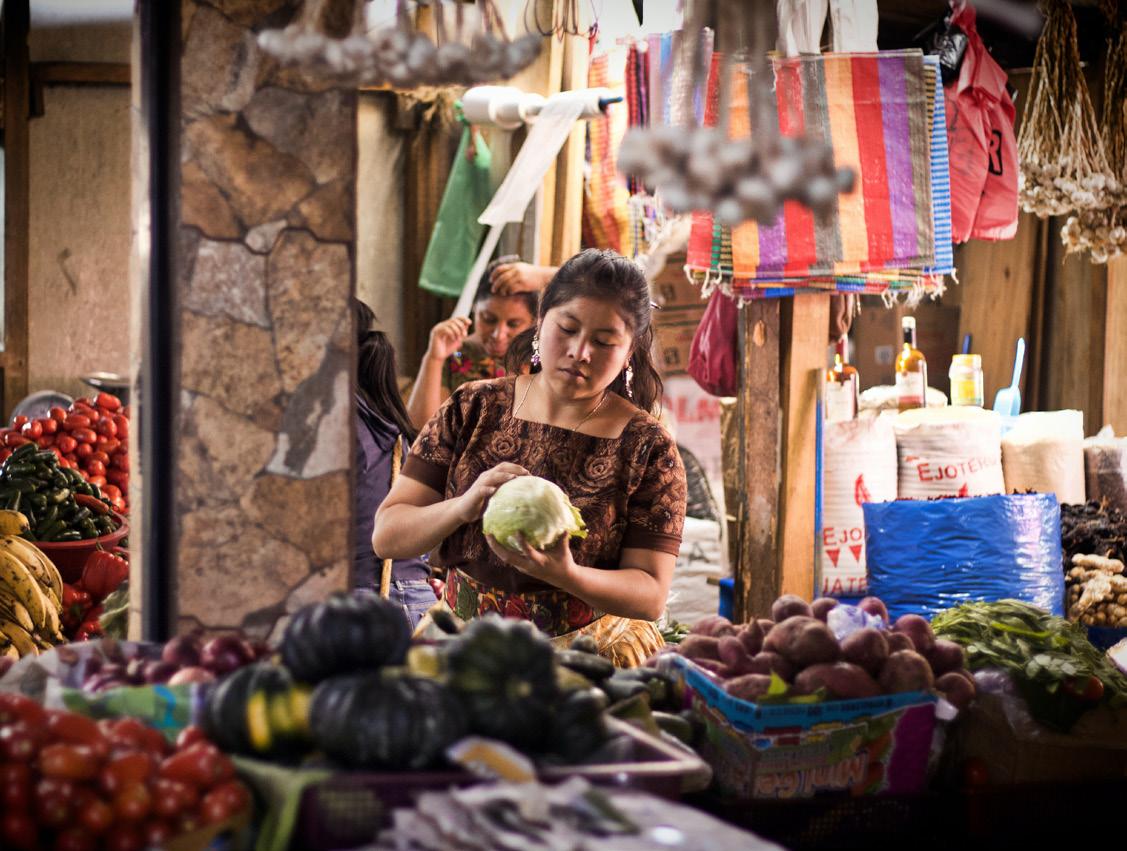
54 55 FEATURES WOMEN OF GUATEMALA
To explore all that Guatemala has to offer, from ancient ruins to stunning landscapes, contact jennifer@jacadatravel.com.
Below. When you see Tikal rising out of the misty jungle it’s not hard to imagine the people who once lived here.
Written in the Stars
The neverending night skies are full of wonder and mystery. They’ve implored humanity to gaze upwards and study what we see since we first walked the Earth. Our spirituality, legends, history and hunger for knowledge are all tied up in these celestial bodies.
Words: TERRI DUNBAR-CURRAN

57 56 FEATURES
There’s nothing quite like finding yourself deep in the countryside, gazing up into the depths of the inky black skies, your eyes dancing between the flickering pinpricks of light. Marvelling at the gleaming stars and swirling constellations gives you space to pause and reflect. Perhaps you’re struck by your place in an ever-changing galaxy, or maybe your daily life seems insignificantly small compared to the vastness of spacewhatever emotions the night sky stirs in you, they have the potential to alter both your experience of the world, as well as how you view your place in it.
Even if you haven’t spent much time purposefully studying the night skies, you’re probably more familiar with them than you realise. In the northern hemisphere, you’ll likely be accustomed to seeing constellations like Ursa Major, Cassiopeia and Orion wheeling slowly overhead. In the southern hemisphere, you might recognise The Southern Cross, Scorpius and Centaurus. Not only does visiting a different part of the world provide you with the opportunity to explore new places and meet new people, but casting your view upwards can reveal an exciting discovery too.
Mindfulness and spirituality
For some, stargazing is simply a beautiful, fascinating hobby, but for others, it can unlock a deeply spiritual experience. Those interested in astrology will speak
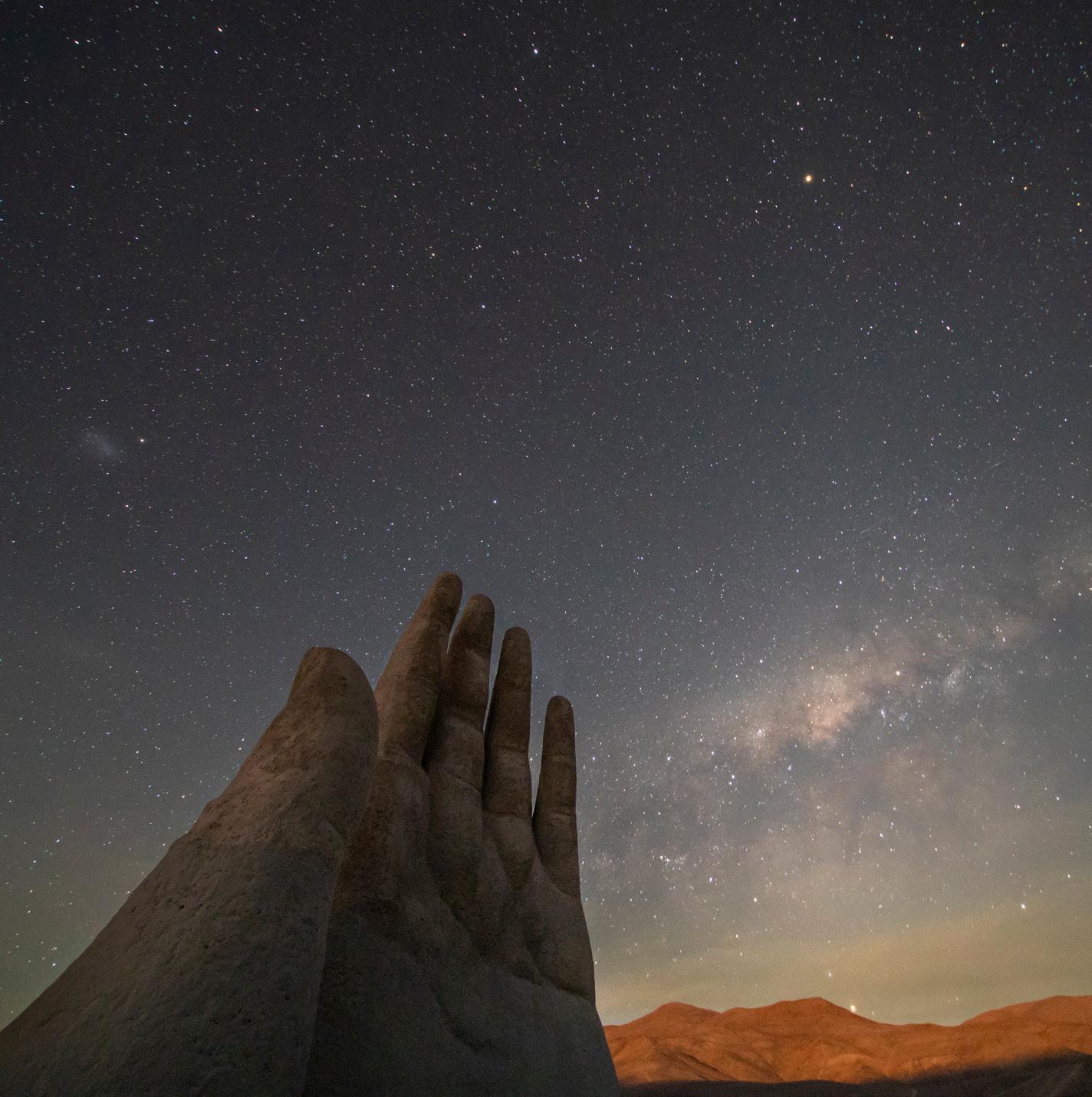
of the connection between the positions of celestial objects and our lives here on Earth, and how this can give us a glimpse into the future. But there’s more to appreciating the stars than working out which star sign to look for in a partner. Some of the purported benefits of stargazing include self-reflection, stimulating the imagination and providing a form of escapism - all of which lead to a mindful experience of calm, purpose and inner peace.
In addition to requiring you to head out of the busy cities to areas with little to no light pollution, thus likely finding yourself surrounded by the tranquillity of nature, the practice allows your mind to calm, lowering anxiety and stress levels, even just for a short period. Many enthusiasts believe this freedom easily makes room for increased creativity and happiness.
Be patient, though. It can take up to 40 minutes for your eyes to truly acclimate to the low light and fully appreciate the array of stars above you. Take your time getting comfortable and warm, make sure you have snacks and refreshments and make a night of it.
The night skies as a window into the past
There’s another fascinating layer to appreciating the stars, and that is that we, as humanity, have been gazing into the night skies for millenia. And while the stars we see now will be different from those our ancestors marvelled at, stargazing is a window into the past. Essentially, because of how the speed of light works, you’re actually looking back in time - seeing the stars as they were sometimes up to thousands of years ago. In fact, some of the stars you spot may not even exist anymore because of
59 WRITTEN IN THE STARS 58 FEATURES
“Whatever emotions the night sky stirs in you, they have the potential to alter both your experience of the world, as well as how you view your place in it. ”

61 WRITTEN IN THE STARS 60 FEATURES
the length of time it takes for their light to reach Earth. The closest large galaxy to the Milky Way is the Andromeda Galaxy, some 2.25 million light years from us. So we’re seeing its constellations as they were over 2 million years ago, before homo erectus walked the earth. To put that into context, it only takes the sun’s light just over eight minutes to reach us, so we’re always seeing it as it was eight minutes ago.
Myths and legends
Given their significance, it’s no surprise that the stars also play an important role in religion, mythology and stories around the world, and have done so right from ancient cultures to modern times. In Greek mythology, heroes receive a place among the stars and are seen as semi-divine entities that move across the heavens. Aquarius, one of the zodiac constellations, was first recorded in the second century by the Greek astronomer Ptolemy. The name means ‘cupbearer’ and in Greek mythology it represents Ganymede, a young man who served as a cupbearer to the gods on Mount Olympus, and was gifted with eternal youth.
The constellation Cassiopeia was named after the queen from Greek mythology who claimed to be more beautiful than the sea nymphs, angering Poseidon. Out of vengeance, he sent a sea monster to destroy the kingdom. Cassiopeia’s daughter Andromeda was destined to be devoured by the monster, but was rescued by Perseus in return for her hand in marriage. Cassiopeia, along with her husband Cepheus and their daughter were all eventually turned into stars.
Cultural significance
Some early San people in Africa believed that the Milky Way was created when a
child threw her campfire ashes into the sky to help her father find his way home from a hunting expedition. Other groups held that the white band of stars represented the bellies of a massive herd of celestial springbok, and in Zulu culture, it is the result of the gods’ vast herd of cattle trekking to and from their feeding grounds.
For Australia’s Aboriginal people, the stars are home to their ancestors and spirits, and they have been carefully observing the skies for thousands of years. The appearance of certain stars mark important events in their cultural calendar, and others herald the start of new seasons.
Science and technology
Enthusiasts who want to take the celestial fascination one step further have a wide array of observatories around the world to discover, some of which are open to visitors. Each has a different field of study, with scientists and astronomers collecting important data which help to unlock the secrets of our universe.
The largest astronomical project in existence, the Atacama Large Millimeter/submillimeter Array ( alma ) gives us insight into the birth of stars and planet formations during the early Stelliferous era. Because the signals from space are absorbed by water vapour in Earth’s atmosphere, it was vital to build alma somewhere high and extremely dry. San Pedro de Atacama in northern Chile is among the driest places on Earth, and therefore perfect for unhampered access to the signals. The scientists at alma study the building blocks of stars, galaxies and planets. The images they capture are of stars and planets being born, as well as distant galaxies as they were some 10 billion years ago.
Night skies around the world
We’ve handpicked some of the best places to observe the night skies and our recommendations of where to stay while there.

Latin America
Atacama Desert, Chile
The Atacama offers one of the clearest night skies in the world.
Where to stay: Explora Atacama
The Guanacaste Coast, Costa Rica
The best star gazing is on clear winter nights from September to November.
Where to stay: Rio Perdido
Asia Paci c
Koh Kood, Thailand
Koh Kood’s state-of-the-art observatory offers 360-degree views of the skies.
Where to stay: Soneva Kiri
Aoraki Mount Cook, New Zealand
In the heart of the Aoraki Mackenzie International Dark Sky Reserve.
Where to stay: Mt Cook Lakeside Retreat
Europe
Abisko Sky Station, Swedish Lapland
A great viewing spot for constellations and the northern lights.
Where to stay: Icehotel
Africa
Sossusvlei, Namibia
The NamibRand Nature Reserve, Africa’s only dark sky reserve.
Where to stay: Sossusvlei Desert Lodge
63 WRITTEN IN THE STARS 62 FEATURES
“Given their signi cance, it’s no surprise that the stars also play an important role in religion, mythology and stories around the world.”
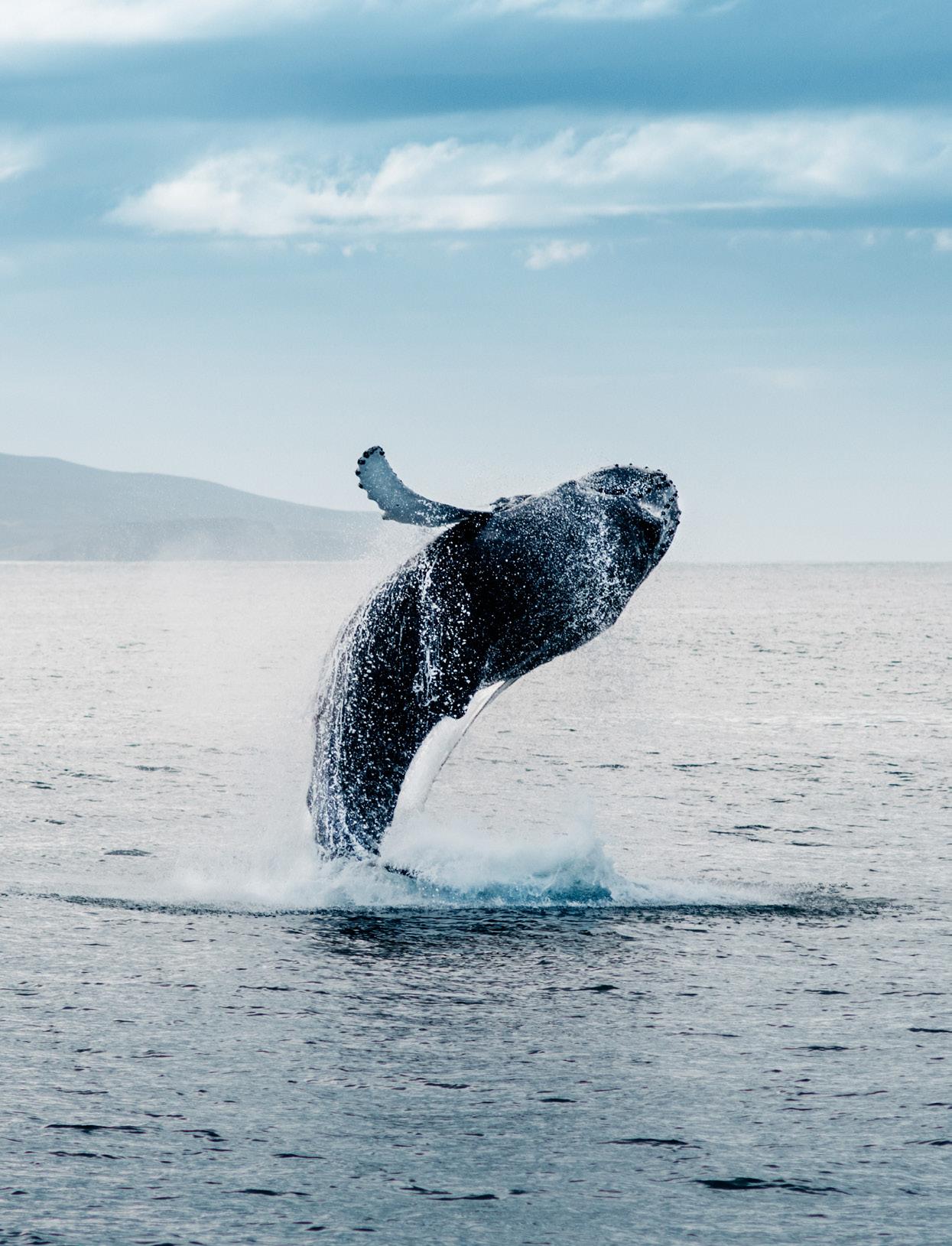
65 PAGE TITLE 66 Take the Wheel 68 Deeper than the Sea 72 Almost Human 76 Uruguay: Beyond the Obvious 80 How I Travel 84 Taste of Thailand 3 Inspirations
Take the Wheel
Step into Puglia's vintage postcard landscapes, dotted with olive trees and bathed in warm summer light, and explore in style with a classic car

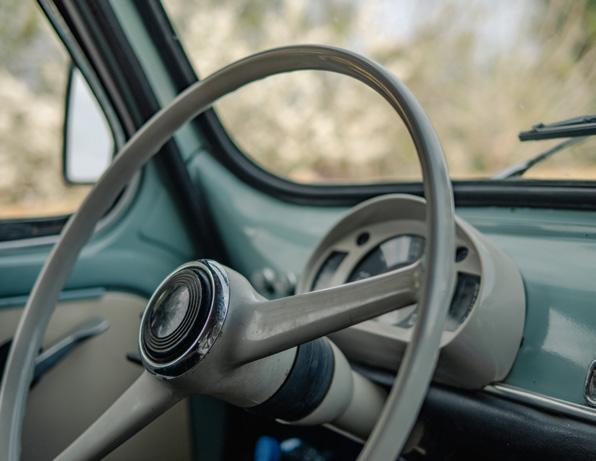
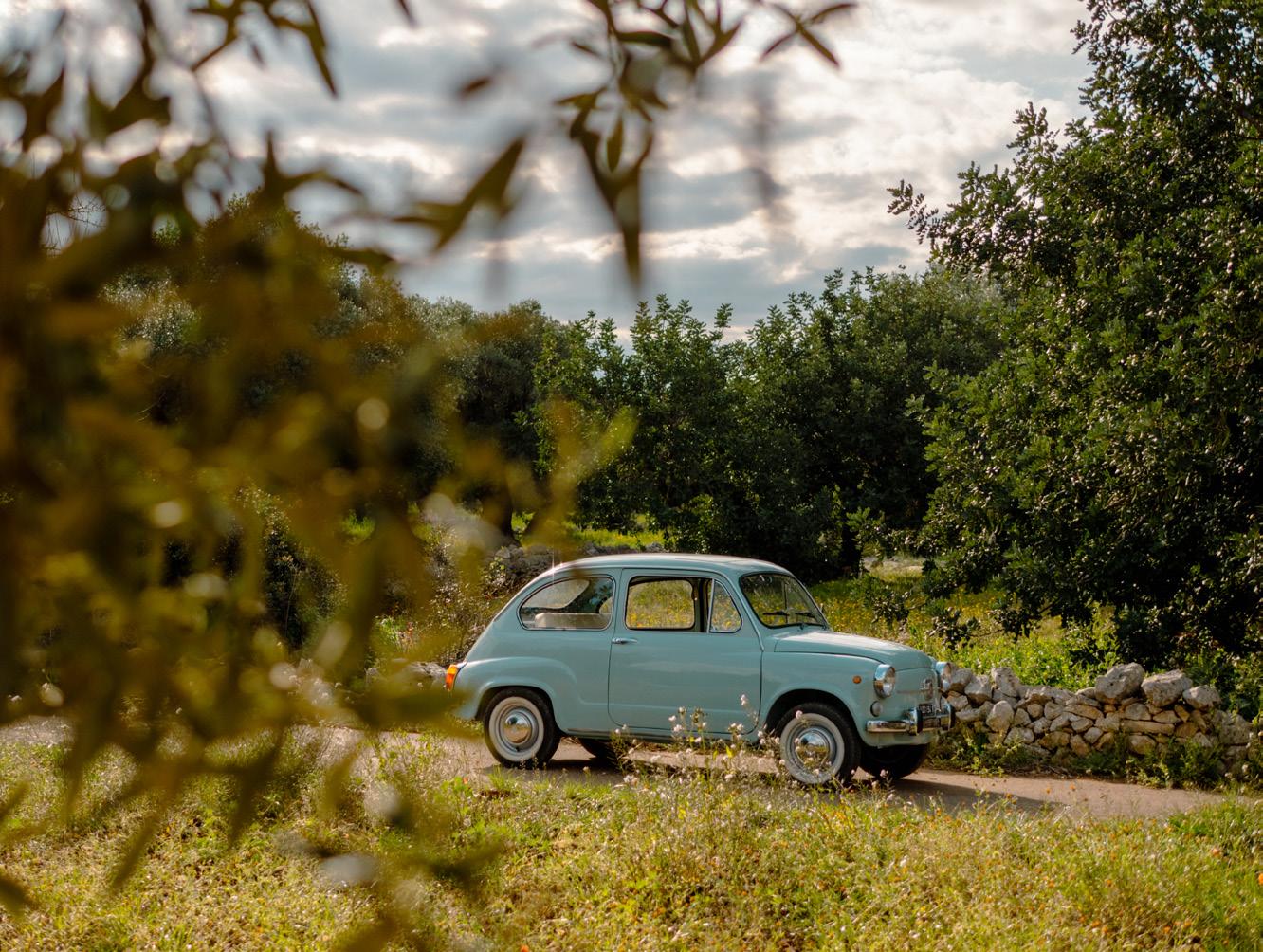 Words: JESSIE BRECHIN-LEMAN
Words: JESSIE BRECHIN-LEMAN
Puglia is full of the kinds of winding, picturesque roads that seem to have sprung straight from a film maker’s imagination. Lined with old stone walls and weaving through a landscape peppered with ancient olive trees, fertile vineyards and flower-filled fields, they lead to whitewashed villages and historic farms. And what better way to explore them than by hopping in a classic car.
When you meet your guides in the morning you’ll discover your ride for the day and set off in convoy along the country lanes towards the hilltop towns of the Itria Valley. For the drivers there’s the thrill of immersing yourself in the twists and turns of one of the most beautiful landscapes around, and for the passen-
gers the chance to relax and take it all in in an unforgettable way.
Stop off for a coffee in Cisternino, where the charming centre has remained intact for centuries with shady streets and panoramic views of the rolling hills around.
Admire the baroque architecture of Martina Franca, its Piazza Rom and the 17th century Palazzo Ducale.
Stretch your legs in Alberobello with a guided tour of the streets that are home to over 1000 trulli houses. These typical structures with their iconic conical roofs are considered a UNESCO World Heritage site.
66 67 INSPIRATIONS TAKE THE WHEEL
Left. A unique way to experience the beauty and cultural heritage of Puglia.
Bottom right. The rustic charm of Puglia's stone buildings adds a timeless beauty to the landscape.
← To start planning your trip to Puglia speak to our Europe team.
Deeper than the Sea
Imagine four days at sea filled with exciting activities in one of the world’s most isolated areas. Setting sail on the Drake Passage allows you to shift your mindset completely, while deepening and shaping your connection to the intriguing continent of Antarctica.
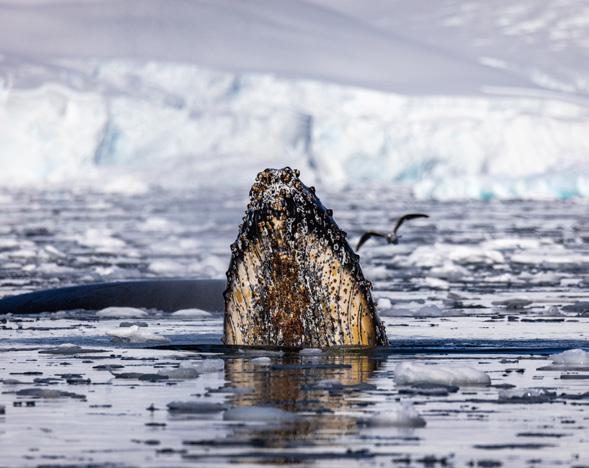
You may have heard the saying that ‘the journey is more important than the destination.’ Variations of this phrase have long been quoted by poets, philosophers and adventurers alike. It’s sometimes a metaphor for the journey of life, but it can also literally highlight the joy and excitement of all different kinds of journeys, and the fact that motion is meaningful.
When it comes to Antarctica – possibly the ultimate bucket-list destination – it’s hard to believe that anything could be more life-changing than the White Continent itself. But the journey there (and back again) is a tremendously important part of the experience, giving travellers the opportunity to expand their perspectives and open their minds along the way.
Most trips to Antarctica begin in Latin America, although it’s also possible to depart from South Africa. There are two ways to get there: by aeroplane or boat. If you go by air, you’ll take off from the small Chilean town of Punta Arenas and land on King George Island just one hour later – a surprisingly fast journey into this fascinating world of ice and snow.
Setting sail
Travelling to Antarctica by boat is an entirely unique experience. Voyages begin from Ushuaia, Argentina: the world’s south-
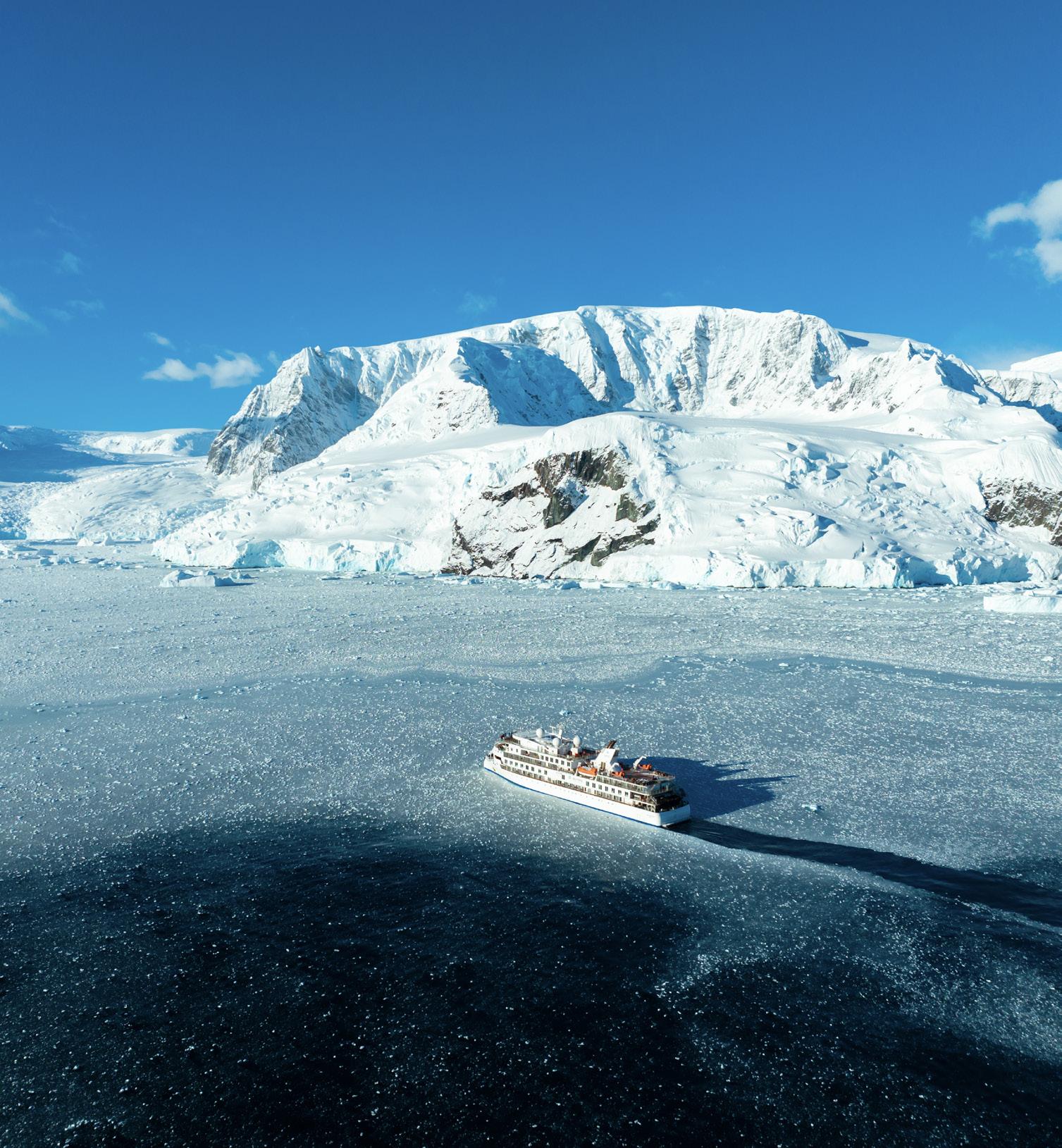
ernmost city and the capital of the incredibly scenic Tierra del Fuego archipelago. Overlooking the Beagle Channel, the city offers easy access to the national park and several small islands teeming with birdlife.
Beyond the archipelago, the legendary Drake Passage dominates the seascape all the way to the icy horizon. This notoriously tempestuous stretch of water has an interesting history. It’s named after the English explorer Sir Frances Drake, although Spaniard Francisco de Hoces became the first European to discover it in 1525.
It wasn’t until 1616 that a European explorer successfully navigated the Drake Passage; that honour belongs to a Dutchman named Willem Schouten. This was no easy feat, especially considering the wooden sailboats that the crew had to manoeuvre through the cold, rough and unpredictable waters – it’s a wonder they made it at all.
Centuries later, the journey through the Drake Passage is still an exhilarating adventure. But these days it comes with the luxury of stabilised and ice-strengthened vessels, state-of-the-art navigation technologies and an experienced crew (who know where they’re going, unlike 16th- and 17th-century navigators). There are comfortable cabins, delicious hot meals and a wide array of educational activities to engage in.
69 DEEPER THAN THE SEA
Right. A humpback whale breaches the icy Drake Passage.
Learning at sea
Cruising to Antarctica gives travellers two full days to immerse themselves in the experience and prepare for what’s to come, away from the hustle and bustle of airports and tiring itineraries. During this time the mind can shift gears, recalibrate and digest the endless knowledge offered by the guides and experts on board.
Ranging from wildlife photographers to biologists and beyond, these experts present sessions on topics like wildlife, geography and oceanography. Some vessels even allow passengers to support research efforts by collecting data on seabirds, whales or clouds. You can also learn about Antarctica’s intriguing human history through stories of explorers, whalers and researchers – plus some true crime tales – told well into the evening. Aside from the educational element of the two-day voyage, many travellers experience an emotional shift as well. As you slowly leave Tierra del Fuego behind,
Choose your cruise
Exploring Antarctica by boat offers an entirely unique perspective of the landscape and its incredible wildlife. There are various great cruisers to board, each providing the highest possible comfort and luxury. These are a few of our favourites:

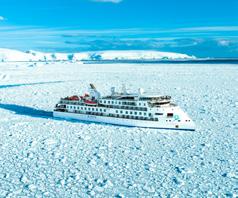
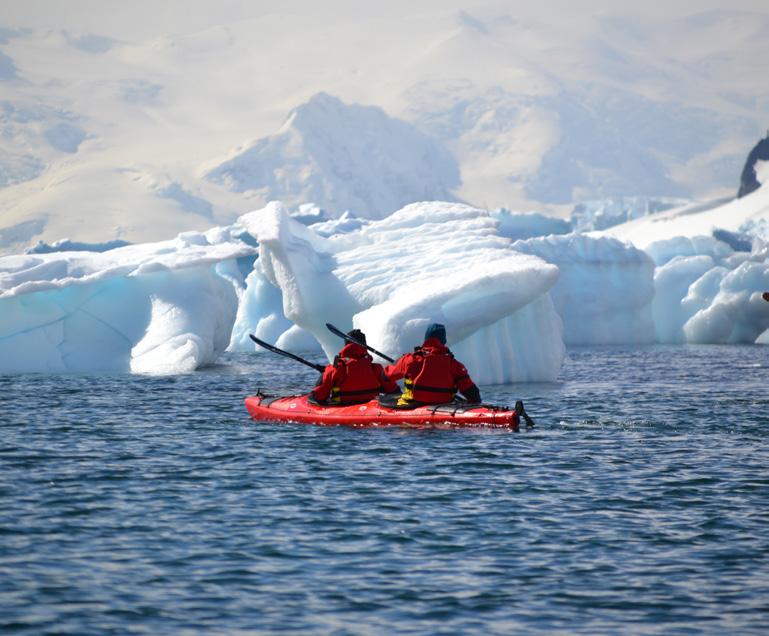
This ship boasts state-of-the-art design, allowing it to sail even the most remote waters comfortably and efficiently. There are 76 cabins, many with private balconies. The luxurious onboard facilities include a modern lecture lounge, a library, multiple observation areas, an excellent restaurant and a cosy bar, as well as a spa, sauna and gym.
watching the craggy islands fade away until there’s nothing but sea and sky, the enormity of what awaits you begins to hit home. Nothing compares to catching your first glimpse of an iceberg, whale or penguin as you enter the brilliant landscape of Antarctica, blanketed in pristine white. Once the adventure on the ice is over, it’s time to climb aboard the ship again for the trip back to Argentina. This voyage is another kind of emotional journey, allowing the experience to slowly sink in before you return to the rest of the world. This time the educational sessions are imbued with shared experiences, new meaning and memories – giving each traveller the chance to fully understand and internalise the impact of the trip.
This is one of the best boutique cruise ships in Antarctica, with fantastic facilities and a 1A Super ice class rating (the highest class awarded to passenger vessels). Guests can enjoy the sauna, gym and two restaurants, including an exhilarating al fresco dining option – weather permitting. This stunning ship also has its own library and citizen science laboratory.
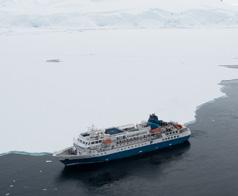
70 71 INSPIRATIONS DEEPER THAN THE SEA
Greg Mortimer Expedition Ship:
MS Seaventure:
Left. Kayakers on a oncein-a-lifetime adventure, immersing in the untouched wilderness of Antarctica.
Below. A rare and mesmerising sight, the king penguin feeds its chick.
Credits: Jamie Lafferty for Aurora Expeditions
← Go on an epic expedition to Antarctica. Plan a call with Lily, our expert travel designer, to start planning the trip on your dreams.
Almost Human
In lush forests, on the edge of a vast deep blue lake, far from the famous savannahs of the Serengeti National Park is one of Tanzania’s best-kept secrets: the Mahale Mountains. Here, Africa’s endangered chimpanzees thrive under the protection of the Mahale Mountains National Park and the people who work there.
Words: EMILY OPIE
We caught up with Jody van Merode, one of Jacada’s Africa travel designers, to hear about her recent research trip to Tanzania. Travelling by light aircraft and boat, she reached the palm-fringed sandy beaches of Lake Tanganyika (Africa’s second-largest lake). There, nestled into the treeline, rooms made of dhow boats with thatched roofs, wooden observation decks and a beach bar that faces magnificent sunsets, belong to Greystoke Mahale; a camp just steps from the dense forests of Mahale Mountains National Park. The perfect base for chimpanzee tracking.
Chimpanzees and humans are close relatives, sharing a 98% DNA match and 60% of our personality traits. For Jody, observing chimpanzees in the wild triggered an intense feeling of familiarity as she noticed our shared characteristics. In the same way that we might recognize an acquaintance we’ve only met once before, Jody was able to identify individual chimpanzees after just one encounter with them.
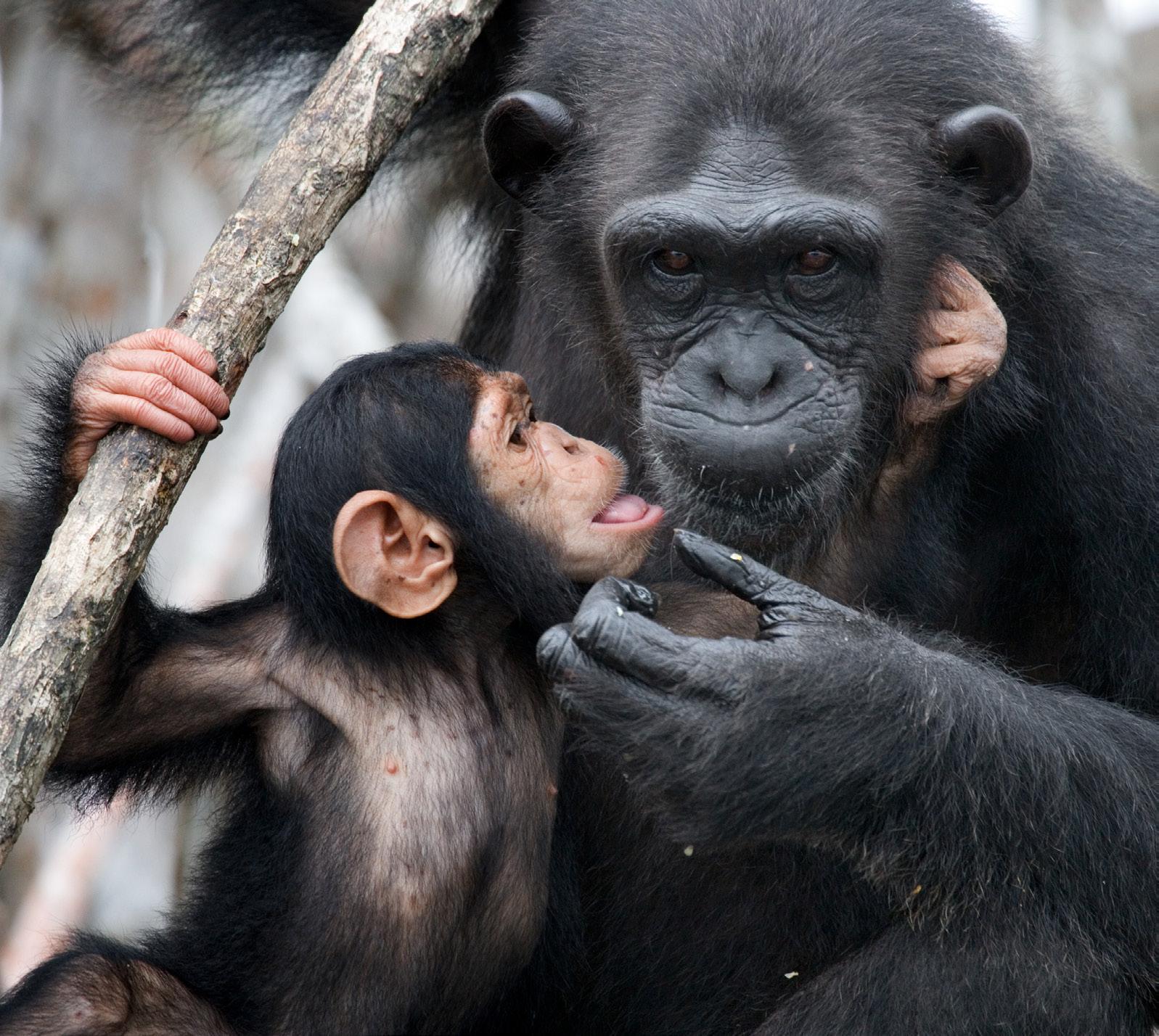
‘This was 100% my best wildlife experience ever’, says Jody. ‘I talked about it constantly when I got home, it was hard not to think about it.’
Jody spent four nights at Greystoke Mahale. Each morning she waited, hoping to hear the two-way radio crackle to life
with the message from trackers; ‘we found them, let’s go.’ There are no roads for over 160km so all chimpanzee tracking must be done on foot, side by side with your guides and trackers - who Jody quickly formed a bond with. ‘Everyone at the camp was so friendly, you immediately felt like part of the family.’
Jody explains that this sense of ‘togetherness’ in the camp can be felt as soon as you arrive; the staff, guides and trackers have formed a family that combines chimpanzees and humans - ‘it’s not a them and us situation at all’. This acceptance is extended to everyone who arrives, creating a meaningful, collaborative travel and wildlife experience. ‘I really felt like I belonged to something special here, I was very sad to leave,’ says Jody.
Today, it’s thought that over 800 chimpanzees thrive in the remote, protected haven of the Mahale Mountains National Park, which was established in 1985. But the national park’s story begins far away, at Kyoto University, Japan. In 1965, to further their primate research, Japanese scientists, who had already studied Japanese monkeys, travelled to Tanzania to find the missing link between chimpanzees and humans.
72 73 INSPIRATIONS ALMOST HUMAN
Right. Chimpanzees and humans are close relatives and they share 60% of our personality traits.
In the early years of the scientists' work, two family groups of chimpanzees were successfully habituated. During the observations, many human traits were recorded; along with our physical similarity of skulls with front facing eyes and our ability to walk on the ground on two legs, there’s also the range of complex emotions we can both display, from happiness to grief and from jealousy to compassion. Some of the most fascinating findings occurred when the groups were compared. In-depth observations revealed that despite living in the same world (forest) each group held distinctive cultural differences - just like us.
Observing chimpanzees in the wild and witnessing their uncanny human behaviour is thought-provoking, raising questions about humanity and our own place in the world. For some, close encounters with our nearest cousins can hold a mirror up
to their own life and experiences, causing them to confront their own humanity.
Zoe Purcell, co-founder of the original Greystoke Mahale camp, reflects on the time she spent with the chimpanzees in the book The Chimpanzees of Mahale Mountains She reiterates this notion of chimpanzee observation, often compelling us to look within: ‘There is no doubt in my mind that we learnt more about ourselves from those chimpanzees than we ever learnt about them’.
As for Jody, it’s safe to say her time at Mahale will continue to shape her travel adventures for some time to come. ‘I really want to go to Borneo, I’m desperate to see orangutans in the wild, I think I’ve become obsessed with primates.’
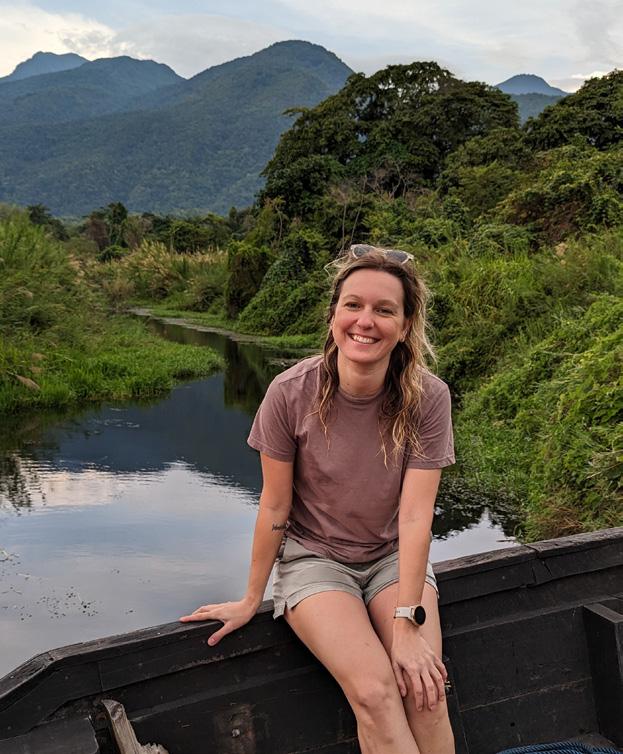

Inspired by Dr. Jane Goodall

When Dr. Jane Goodall embarked on a journey to Gombe Stream National Park in Tanzania, the world knew very little about chimpanzees. She carried little more than a notebook and binoculars, yet managed to gain access to the world of some recognisable creatures.
For years, she studied their human-like behaviours in the wild, allowing her to connect with the chimps and to make first-of-their-kind observations about chimpanzees such as their emotions and personalities.
Today, her work has inspired generations across fields, influencing individuals, institutions and organisations to follow in her footsteps.
In the Shadow of Man
One of Dr. Goodall’s earliest and most well-known books, In the Shadow of Man, details her life and experience among the wild chimpanzees of Gombe between 1960 and 1970.

Through a Window
A follow-up to In the Shadow of Man this book recounts Jane’s observations and interactions with chimpanzees over the course of 30 years.
The Book of Hope
Published in 2021, The Book of Hope is Dr. Goodall’s call-to-arms, where she discusses how we can protect and restore the world we have inherited and, in many ways, damaged.

74 75 INSPIRATIONS ALMOST HUMAN
Left. The opportunity to track chimpanzees in Mahale Mountains National Park was Jody van Merode’s top wildlife experience.
← Plan a wildlife and primate adventure to Africa.
Uruguay: Beyond the Obvious
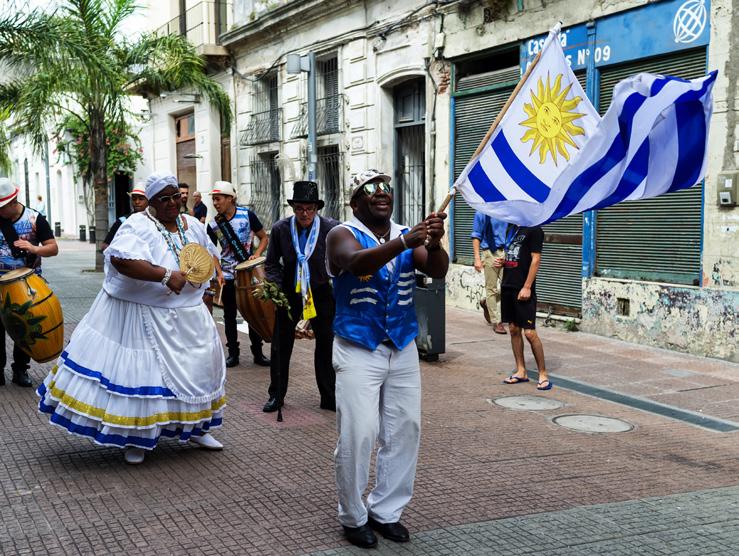
Journey off the beaten path to discover Uruguay’s charming towns, pristine beaches, and breathtaking landscapes that often go unnoticed…
Words: TERRI DUNBAR-CURRAN
While neighbouring Argentina and Brazil may be the stars of the show, Uruguay holds its own, offering a captivating journey that is worth every moment. Nestled between these two giants, the country is a blend of rich history, charming towns, pristine beaches, and delectable cuisine. Whether it's exploring the cobblestone streets of Colonia del Sacramento or savouring a glass of fine wine in the vineyards of Carmelo, Uruguay beckons travellers with its understated beauty and laid-back charm. But beyond the well-trodden routes, a world of hidden wonders awaits.
Where to begin?
A great place to start your discovery of Uruguay is in the capital itself, Montevideo. A city that dances to the beat of its own rhythm, Montevideo captivates the soul with its irresistible blend of old-world charm and vibrant energy.
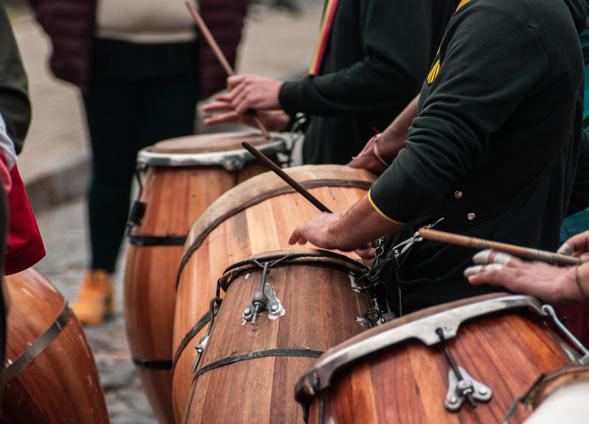
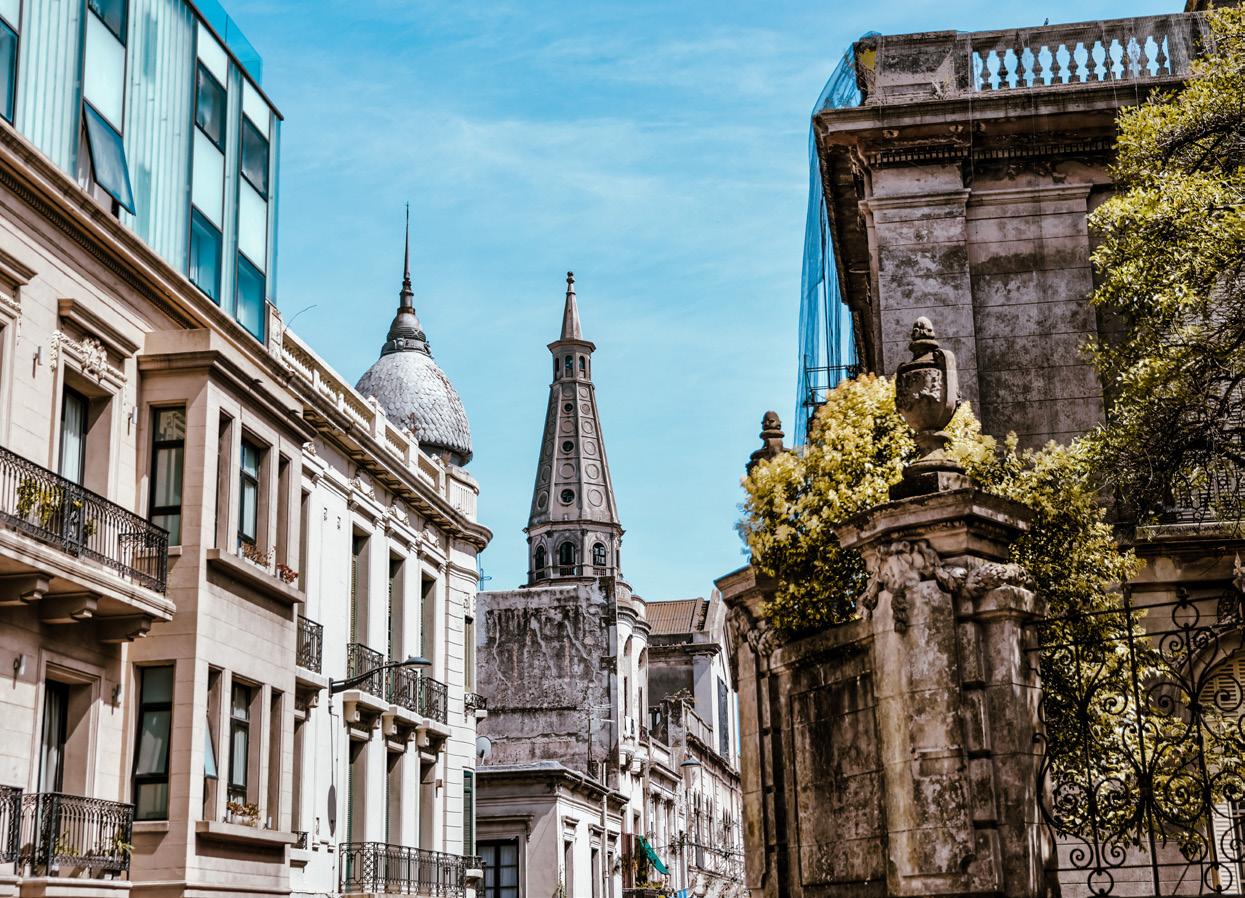
Wander through its cobblestone alleyways, where history whispers secrets of a bygone era and immerse yourself in the passionate artistry of tango that echoes through the air. As the scent of freshly brewed mate wafts from bustling cafes, feel free to join the locals in savouring this sacred elixir, sharing stories and laughter that bring the city to life. As the day gracefully transitions into night, embrace the rhythm of candombe (Afro-Uruguayan folk dance), as drumbeats fill the streets and a lively procession weaves its way through the city. With countless restaurants to discover, Montevideo’s food scene is a vibrant tapestry of flavours. Follow your senses through bustling mercado halls, where stalls overflow with fresh produce and artisanal delights. From steaks finished with flavourful chimichurri to the freshest seafood and the fluffiest chajá sponge cake served with sliced peaches, every bite is a celebration of Uruguay’s culinary heritage.
The warmest welcome
In this land where friendships are cultivated like a treasured vineyard, it is no wonder that Uruguayans are renowned for their warmth. It is in their nature to strike up conversations with strangers, and to make you feel like an old friend from the moment you meet. Whether sharing a mate or dancing to the beat of candombe, Uruguayans infuse each interaction with a sense of camaraderie and genuine connection.
76 77 INSPIRATIONS URUGUAY: BEYOND THE OBVIOUS
Above. The city streets are filled with the sound of candombe drumming.
Below. Locals adorned with traditional costumes dancing to the rhythmic beats during a candombe procession.
Culinary delights
Serving as Montevideo’s main produce and meat market since 1868, the Mercado del Puerto is located near the city’s cruise ship terminal in a converted train station. While it’s no longer the produce market it once was, it is now home to a collection of popular restaurants where you can eat your fill of Uruguayan dishes. Stroll through the lively market, where flames dance beneath grills, charring mouthwatering cuts of beef and sizzling sausages. Take a seat at one of the bustling parrillas, where skilled grillmasters craft succulent masterpieces, while savouring the tender juiciness and smoky flavours that have made Uruguayan barbecue legendary. As the lively atmosphere wraps around you, accompanied by the rhythmic beats of live music, it comes clear that Mercado del Puerto is more than just a place to have a meal; it’s an unforgettable celebration of Uruguayan culinary traditions and a feast for all the senses.
Vineyards and olive groves
Uruguay also has a thriving wine industry and one of its most prominent grapes is tannat – a red wine with a bold and robust character that mirrors the spirit of the land. Enthusiastic oenophiles may be interested in discovering some of the many family-run wineries in the country, where guided tours led often by the owners themselves, let you in on some of the secrets of their award-winning wines. In the Carmelo area, Bodega El Legado is one such winery where a love for the land
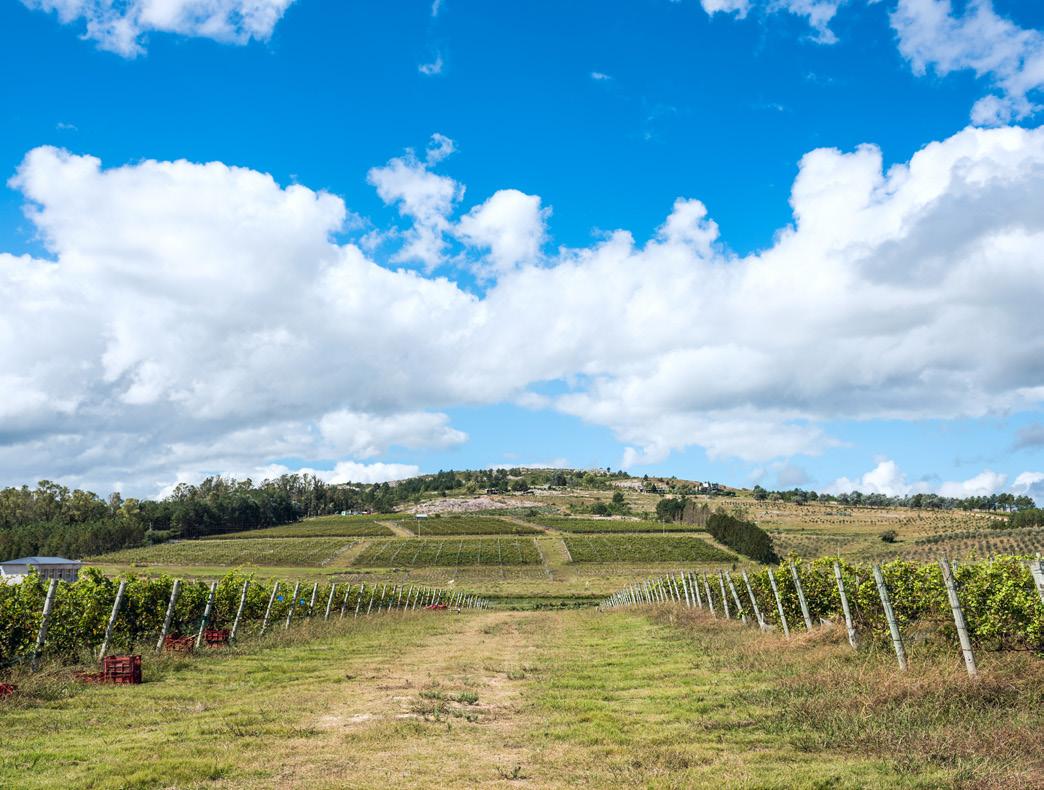
has been passed down through the generations - a true testament to the estate’s name which means ‘legacy.’
Over in Eden Valley, you can wander through the olive groves at Lote 8. Here, the ancient art of olive cultivation thrives, producing a liquid gold that graces tables around the world. Taste the exquisite extra virgin olive oil, with its delicate notes of grass, herbs, and a peppery kick that dances on the palate. With seemingly endless olive trees and vineyards, it’s no wonder this area is affectionately known as the Uruguayan Tuscany. If you want to take the experience a little further, visit Narbona Winery where you can fully immerse yourself in the harvest. Roll up your sleeves and help pick the grapes, then kick off your shoes and get stuck into grape treading, then reward yourself with a delicious wine tasting and paired lunch. The farm was founded in 1909 and the grapes grown here are primarily tannat.
Sea lions and whales
Along the rugged coastline of Uruguay, a magnificent spectacle unfolds as sea lions and whales frolic in the vast blue expanse of the Atlantic Ocean. Visit Cabo Polonio National Park and get the chance to see the largest sea lion colonies on the continent. Between September and November you may even be treated to the sight of whales in the calmer waters. Witness these gentle giants as they navigate their ancient migratory routes.
Jacada recommends:
1.
For a truly unique experience head to the small town of Garzon where celebrity chef, author and restaurateur Francis Mallmann’s (Netflix Chef’s Table) team will recreate the chef's seven fires either on the streets of Pueblo Garzon or at his private campo. During this private experience you’ll get an enlightening look at the series of grilling techniques he has adapted for home cooks. Prepare to be inspired.
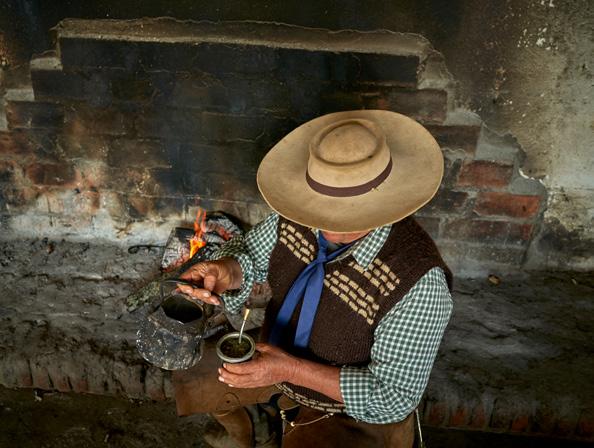
2.
As you explore Uruguay you’ll get to hear some of the music that gives it its unique identity. An experience most visitors aren’t privy to though is spending some time in the studio of Afro-Uruguayan drum luthier and percussionist Lobo Nuñez in Montevideo. Within Uruguayan candombe circles he’s considered a legend, and who better to learn about Carnival and local drums and other instruments from than him? This experience offers you a rare insider access to a part of Uruguayan culture that not many visitors get.
Discover Uruguay’s best kept secrets → charles@jacadatravel.com

78 79 INSPIRATIONS URUGUAY: BEYOND THE OBVIOUS
Right. A Uruguayan gaucho pours a cup of steaming mate.
Opposite. The rolling, sunny vineyards of Uruguay.
How I Travel
When travel ground to a halt in early 2020, Jacada client Alexandra Hom was forced to postpone her upcoming trip to South Korea, from where she was adopted as a baby. In the meantime, she reached out to her birth family, and her upcoming trip quickly evolved into something far more profound - a reunion, and the opportunity to discover her Korean heritage.

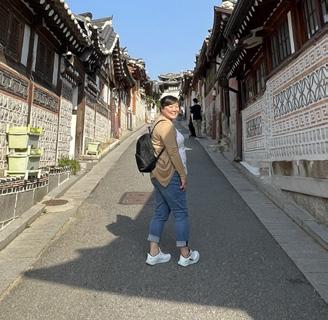
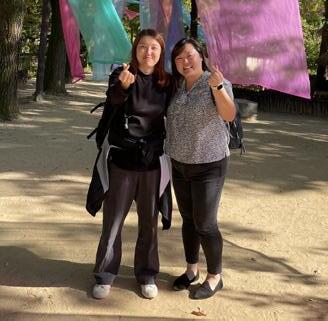
You’d visited a number of places before this trip to Korea. What does travel mean to you?

Travel is my stress relief, it’s my reset button. Some people go for a drink after work, whilst I travel. It’s my time to reflect, learn something new about myself and forget about the stresses of everyday life. I’ve been to France, Italy, England, Greece, Japan, and now South Korea. And around the US as well.
Tell us about this trip and how it evolved as you learned more about your birth family.
I was adopted from South Korea when I was eight months old, and have lived in California ever since. All through my life I had thought about finding and learning more about my birth family, because South Korea doesn’t give you a lot of information when you’re adopted. I seriously considered it in college but I ended up being too busy, and just never got around to it.
South Korean law states that both parties, the adoptee and the birth family, have to reach out to the adoption agency in order for information to be exchanged. In February of 2020 I decided I was emotionally ready and reached out to the agency. They told me that my birth father had reached out only four months earlier! I asked if he’d ever reached out before and they said that no, this was the first time. I was 31 at the time. It had been 31 years and we both contacted them within four months of each other! They immediately exchanged our information and I started messaging him, both of us using Google translate.
I connected with him in February 2020, and the next month I booked the trip with Jacada. Then, due to Covid, I had to postpone it again and again. I’d keep pushing the trip out by six months, until I was finally able to go in October of 2022. Even when I booked in March 2020, I didn’t know what the trip was going to be like, and I had no expectations going in. I’m a person who likes to plan every minute, and at first it was very hard for me to have that open itinerary, because I didn’t know what was going to happen when I was there. Every time we’d postpone, I was still talking to my birth family and learning more. A year into our conversations, I found out that my birth mother lived two hours from my birth father, so we added some time in rural South Korea. And then I found out that I have two biological siblings and a nephew, and so we had to pick some activities that I could do with them. I felt bad that the Jacada team had to change the trip 10 times, but they did it!
80 81 INSPIRATIONS HOW I TRAVEL
“All through my life I had thought about nding and learning more about my birth family, because South Korea doesn’t give you a lot of information when you’re adopted.”
What were some of the highlights or special moments?
I’d say a highlight was meeting the people of South Korea, not even just my family. I really do feel that learning a culture is learning about the people of a country.
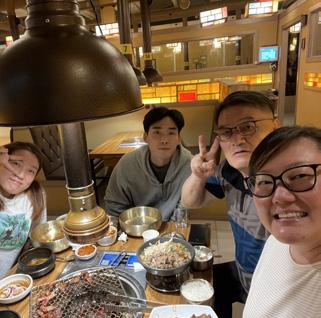
A special personal moment was when my birth father, my siblings and I took a walk around the lake in front of Lotte Tower in downtown Seoul. There were probably 300 people taking a stroll around the lake, and everyone we passed was wearing a warm jacket, except for me and my family. We were all wearing short sleeves, and the translator said: ‘You really must be part of this family. You all must be very warm blooded. You’re the only people around this lake not wearing a jacket.’ It was very special to see how similar we were.
I have a biological sister and a four year old nephew, and on our second or third day together he started to get more comfortable with me, and kept calling me ‘eemo’. The translator told me he was calling me ‘aunty’. Little moments like that were sprinkled all throughout my trip.
As amazing as all the tourist sites we visited were, they were secondary to just spending that time with my family. Every little moment was memorable.
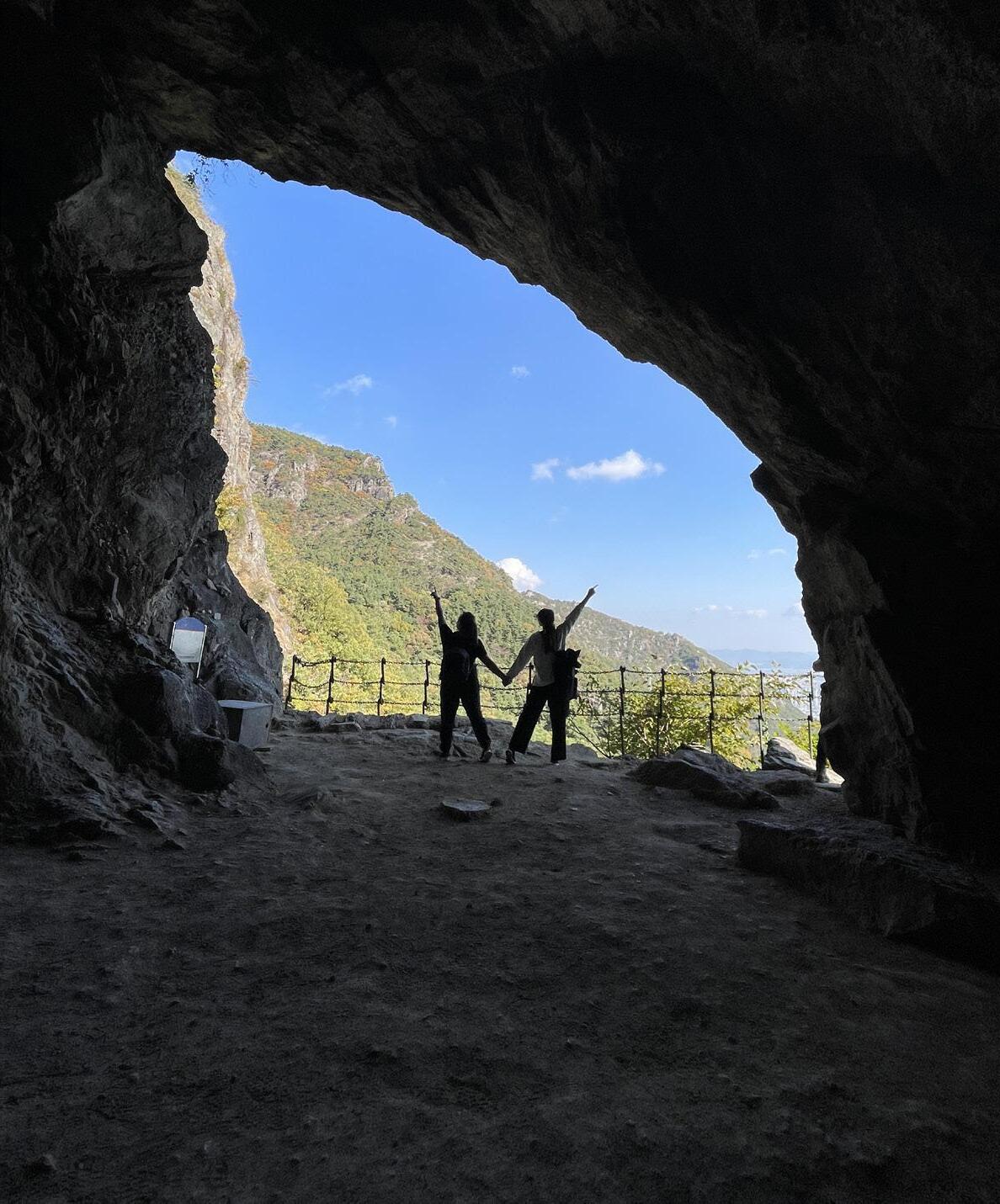
What was the impact of connecting with your past like this?
My life was already so full, and I have a wonderful adoptive family, so it wasn’t that a huge chunk was missing or that my dayto-day life would change dramatically from this. This experience was just the icing on the cake. I feel like the trip has changed me in that it was kind of enlightening - it enhanced who I am by allowing me to get to know my background.
How did you find it working with a translator?
This was the first time I had ever had a translator with me for a trip. I don’t think I could find a way to show my thanks enough for her. She had actually done some reunions with adoptees in the past, and there were situations that I wasn’t prepared for that she handled amazingly.
Some that I didn’t even know she was handling until much later. She coordinated things with my family, none of whom speak English, often the day before and without me even knowing. Everything was seamless. And we really did form a bond - it was as hard to leave her as it was to leave my family at the end of the trip. She went above and beyond.
Do you have any advice for other travellers who might be on a similar journey?
From the perspective of being a solo traveller, especially going to South Korea, I’d say do it! I felt safe the whole time. And from the perspective of an adoptee, I would say don’t rush the journey. I had been thinking about this trip for 20 years, but if I had gone any sooner than I did, I don’t think I would have been emotionally ready. You have to get to a point where you’re thinking about it all the time and you don’t have any doubts, because whatever you’re expecting a reunion trip for adoptees to be, it's going to be ten times more emotional.
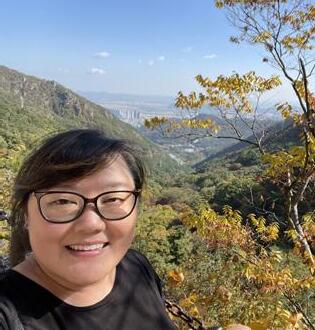
How have your family and friends at home responded to your experience?
My family here has been so supportive from day one. They always said that if there was any information I wanted to get, they’d help me do it. And my friends have been so curious as to what I saw and what my family members are like. I’ve had to tell the story many times over the past couple of months because everyone wants to hear it. Everyone’s shocked when I tell them the full story. It’s amazing.
Are you planning to visit South Korea again in the future, or is there anywhere else that you’re hoping to travel to?
My plan is to go back there every three to four years. Emotionally, that’s all I feel I can handle. I try to do one big vacation a year, so in between visiting South Korea, I plan to do other international trips. My next big one is a Danube River cruise. We’re going at Christmas time so we’ll get to see the Christmas markets.
How will you travel with Jacada? Start planning your next adventure → enquiries@jacadatravel.com
82 83 INSPIRATIONS HOW I TRAVEL
Left. Against the backdrop of South Korea's beautiful landscapes, Alexandra Hom enjoyed a heartfelt reunion with her birth family.
Taste of Thailand
After 15 years spent tasting his way across Southeast Asia, Luke Farrell chats with Emelie Stevenson at Jacada about his love of Thai cuisine, and the impact that travelling has had on his illustrious career.
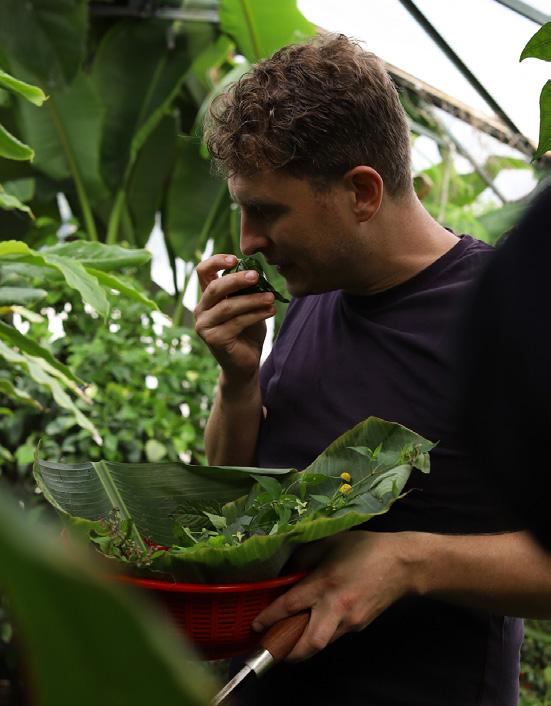
Chef and restaurateur Luke Farrell has had a busy year. Between opening four sites in London and stocking his restaurants with herbs grown from his greenhouse in Dorset, he’s spent what little free-time he does have at his home in Bangkok, Thailand. Here, he is able to relish in what he considers to be some of the best food in the world. Thailand is a paradise for foodies. Each of its regions have their own distinct flavours and popular dishes, meaning the variety and options are seemingly endless. Geography, climate, culture and people’s migration patterns have all played a part in the diversity of Thai cuisine. We caught up with Luke to find out more about his time spent in Thailand, and the impact his travels have had on him.
What started your love of travel?
I’ve always travelled. My dad is a lepidopterist, which is essentially a butterfly expert, and he’d travel around Southeast Asia and Central America for work. From a very young age I was tagging along with him which developed the adventurous side of my personality.
Does food play a big role in your travel experience?
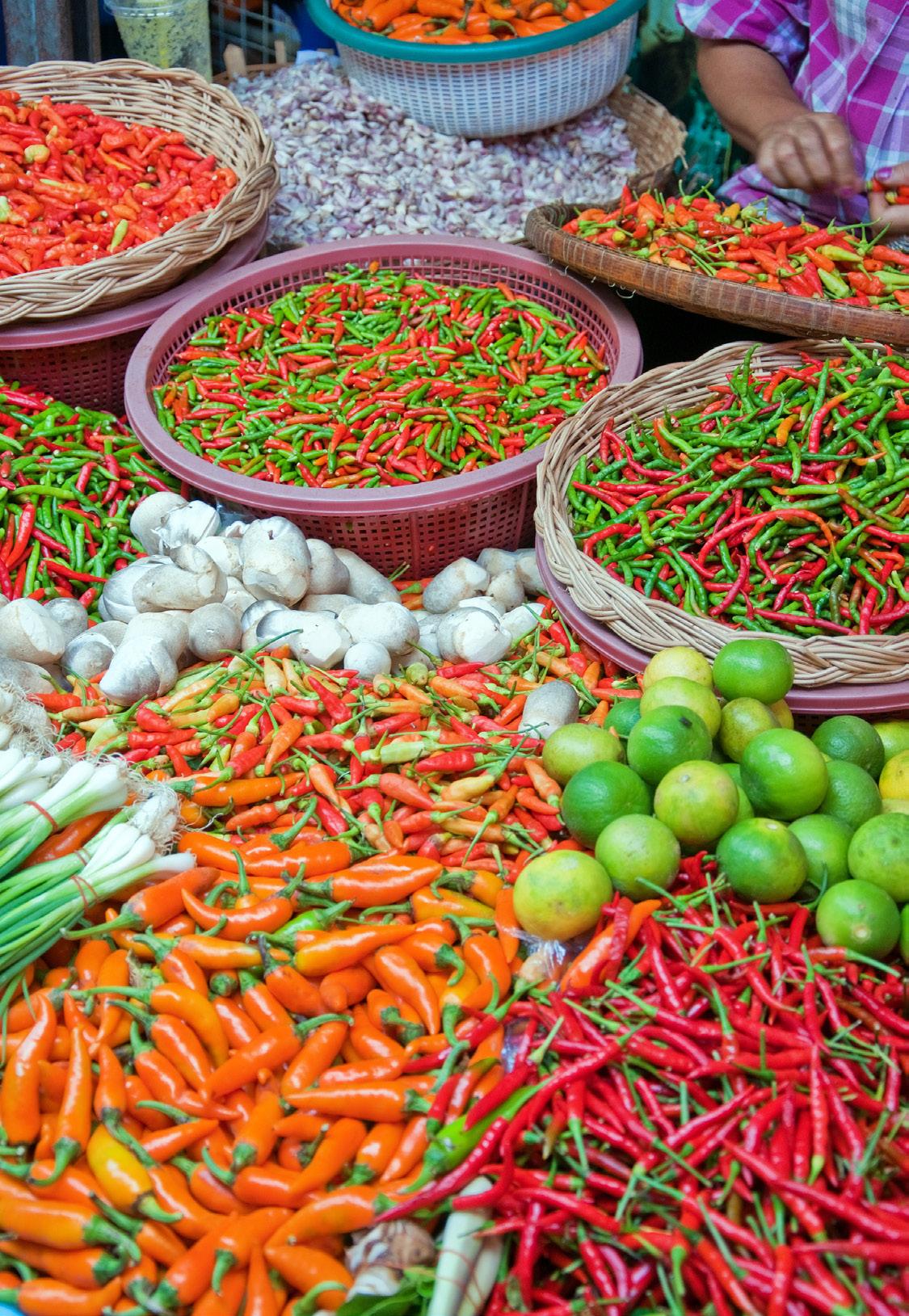
It’s the only reason I travel! I’ve taken a trip from Bangkok to Penang simply to eat a fish head curry. The first time I had the curry was on Gurney Drive when visiting an uncle who is based in Penang, and I’ve never forgotten it. It definitely opened my
eyes to the different flavours and dishes that were out there.
Talk me through your time in Southeast Asia, and how you came to base yourself in Thailand?
I first went to the Singapore Culinary Academy. My idea was that I would learn how to cook in a place that has the food I most enjoyed. Singapore is home to incredible Malay, Chinese and Indian food, so it was my ideal place. I worked my way back from there, through Indonesia, Malaysia, and finally into Thailand. I worked for free, and explored. I ate a lot of brilliant street food during that time. The first time I visited Thailand I was on my own, arriving in the middle of Songkran - a three day celebration in April that marks the Thai New Year, where everyone takes to the street for a huge water fight. It was a shock - I was in a new place on my own, and I was absolutely soaked. I hunkered down in my room with a language book and CD. Learning some basic language skills really
85 TASTE OF THAILAND
Above. Chef Luke Farrell considers Thai food some of the best in the world.
Left. Exploring Thailand's produce markets is a great way to connect with the national cuisine.
opened up a whole new experience to me, as the Thai people I spoke to were so receptive. It was magic.
For me, language and food are two of the best ways to start to understand a culture. The vastness of Thai cuisine, with influences from China, Malay, the Middle East and more, mixed with the immense amount of herbs available, make it something special. It still blows my mind.
You celebrate southern Thai flavours in the dishes you create at your restaurant, Plaza Khao Gaeng. What’s so significant about this particular region of Thailand? Southern Thai food is spicy, like putting your tongue on a radiator. There are so many different chillies grown down there, with more raw chillies, spice and pepper used in the dishes. And there’s a lot of coconut milk and huge mounds of rice used to cool it all down. It’s a coastal region, and there’s lots of jungle, so you get loads of fresh ingredients pulled directly from the surroundings.
I think it would be a huge disservice to the people I learnt the recipes from if I were to change the taste in any way. The pastes we use come directly from Thailand, and the herbs are grown in my greenhouses, in order to create a restaurant you would find in Thailand. I’m trying to replicate the food of Thailand as much as I can, to recreate the experience back in the UK.
It’s a much slower pace in southern Thailand, and the people are so friendly. Ask anyone and they’ll say that the whole of Thailand is relaxed, but for me the south is very chilled out. It’s hot and beautiful, with beaches and jungle, so it’s a place with maximum reward. I live in Bangkok, and whilst I enjoy the food from there, it’s nice to get out of big cities and indulge in the hot curries, fresh herbs and vegetables further down south.
Do you miss Southeast Asia when you’re back in the UK?
I definitely get itchy feet. I like to have a slice of travel when I’m in the UK, especially in recreating the food I’ve grown to love in Southeast Asia. This is why I’ve created my greenhouses and why I’m so passionate about my restaurants. That’s the way to share travel in my opinion, through food, and is ultimately what I try to do with every dish I create.
My mum is from what was then Yugoslavia, and is a fantastic cook. She always
has a longing for her home and her cuisine, so growing up we’d have a lot of Balkan dishes on the table. To be able to share experiences from your travels, and especially the food, is amazing.
More generally, what’s one thing you’ve learnt about yourself from your years of travel?
To tread lightly wherever you are. I’m not a big fan of high-impact travel, or of imposing my views or values on the place I’m visiting.
I also think that you should try to step out and explore, take back roads and go looking for adventure and experiences. Especially in a country like Thailand, there’s always something round the corner. The streets in Bangkok are like a soap opera unveiling itself every hour. You can sit, have a coffee and watch it all happening.
Where’s next on your travel list?
I’m heading to Malaysia, to Penang, which I consider nirvana for foodies! You can get everything there, and the mixture of cuisines and cultures together makes it one of the most incredible places. If you want to get as big of a foodie experience as possible, Penang should be on your list! And top of that list should be the infamous fish head curry.
Where to nd Luke
Plaza Khao Gaeng
Arcade Food Hall, London
Luke’s first southern Thai restaurant, celebrating coast-to-jungle cuisine. Enjoy decadent curries made with the eye-watering chillies, herbs and coconut milk Luke so favours.
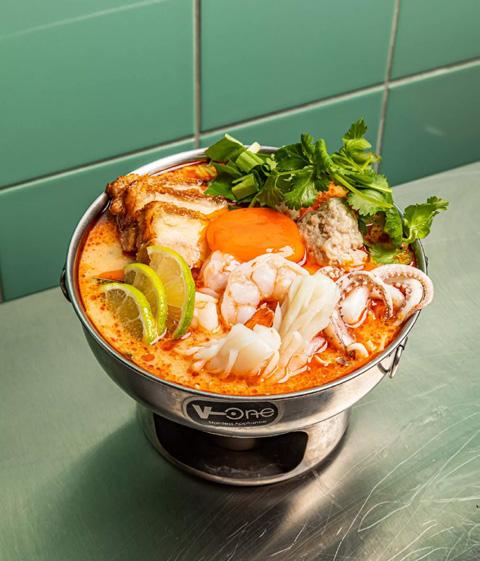

Speedboat Bar
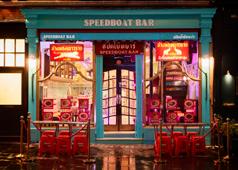
Rupert Street, London
A homage to the restaurants found in Bangkok’s Chinatown, and a nod to the boat racers of Thailand’s canals. Luke’s second venture is a fiery one to add to your list.
Discover Luke’s other ventures at Arcade Food Hall: Bebek! Bebek! for Indonesian street food and Vietnamese Viet Populaire for mouthwatering bánh mì.
Our top Thailand picks
Namh
Bangkok, Thailand
This buzzy Michelin star restaurant adds a modern twist to traditional Thai cuisine. Chef Pim infuses a level of sophistication into dishes, with surprising tastes and textures in every bite.
Nimitr
Bangkok, Thailand
Residing on the 27th floor of the 137 Pillars hotel, Nimitr offers spectacular and uninterrupted views of Bangkok’s epic skyline. This fine dining restaurant serves seasonally inspired dishes, and celebrates modern Thai cuisine with Oriental and Western influences.
Want a taste of what Thailand has to offer? Reach out to → ellie@jacadatravel.com
86 87 INSPIRATIONS TASTE OF THAILAND
Right. Plaza Khao Gaengin London celebrates coast-tojungle cuisine.
Share the magic
Personal recommendations mean a lot to us. When you introduce a friend or family member to us we’ll always take great care of them. We’ll even sprinkle a little something extra on their trip to welcome them to Jacada.
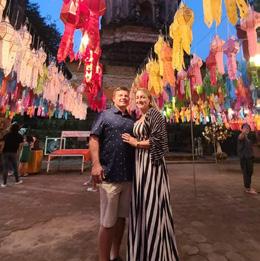
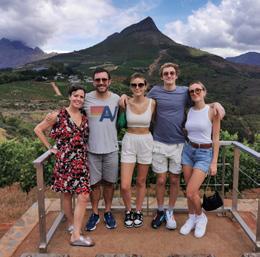
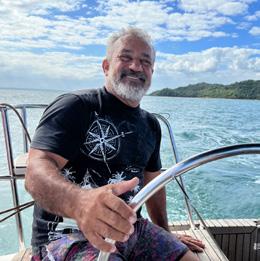
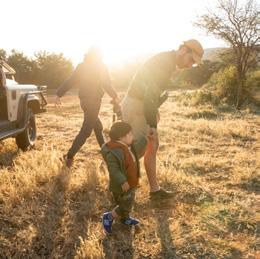
Who will you share the magic with?
Email referrals@jacadatravel.com or get in touch with the team directly.
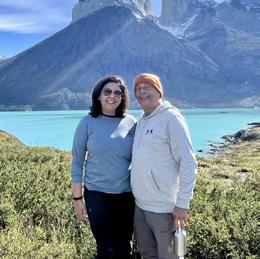

Something exciting is coming soon...

new horizon for Jacada travellers. Take the first peak at our latest destinations in July. Can you guess where we're going?
jacadatravel.com
A
→


















































































 Words: JESSIE BRECHIN-LEMAN
Words: JESSIE BRECHIN-LEMAN







































